POLICY

Anand Madia Officer on Special Dutyto the Chief Minister, Maharashtra

VOL.15 NO 12 PAGES 44
JANUARY2023,`50

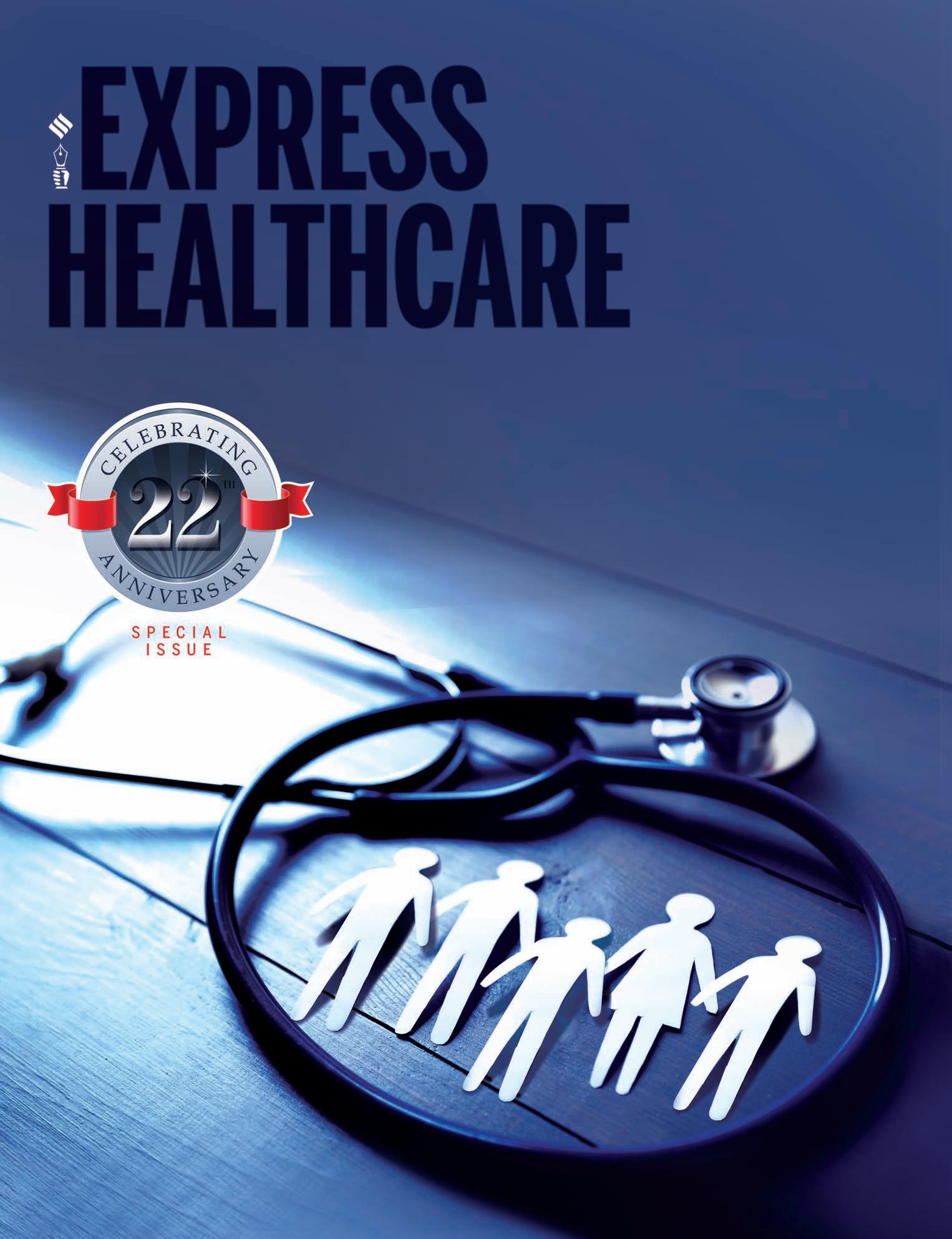














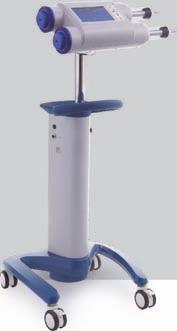

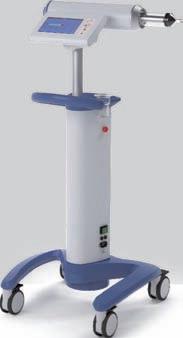

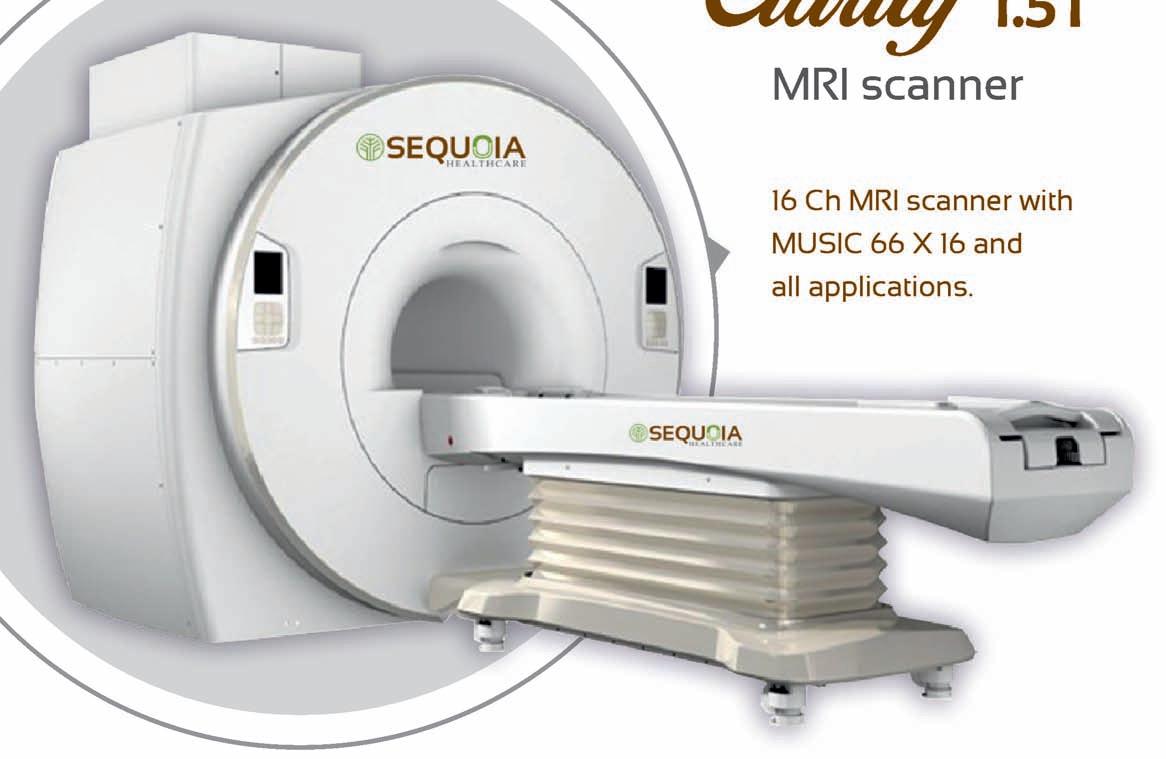




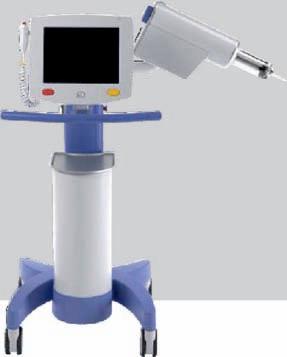

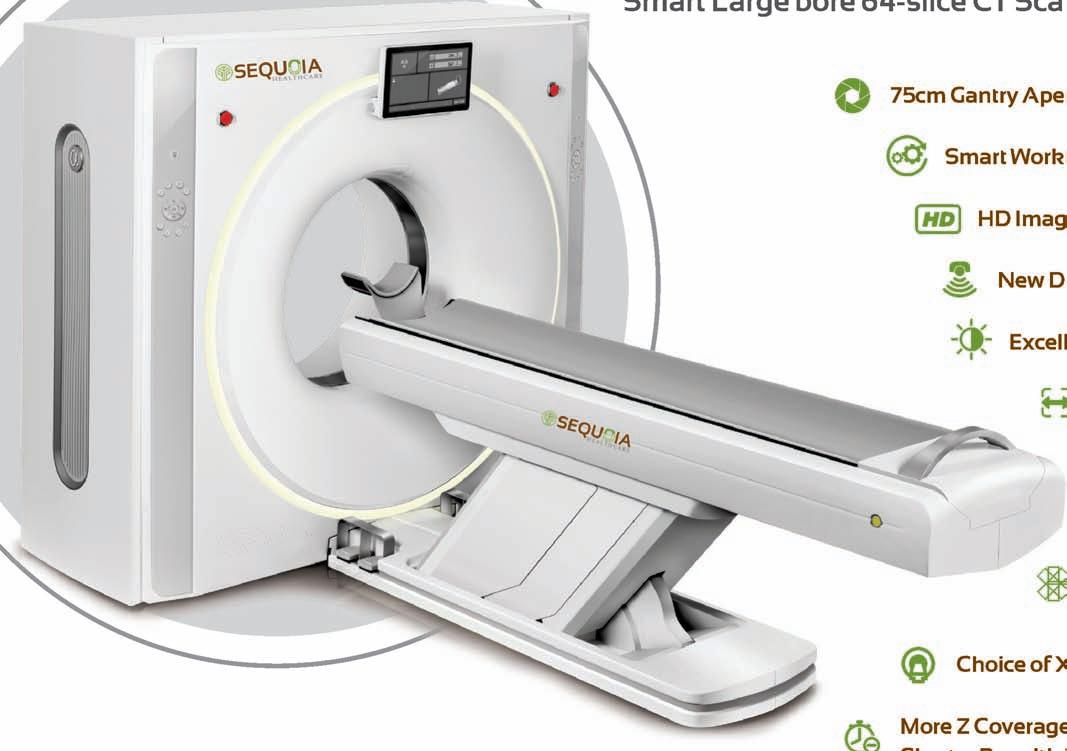

Chairman of the Board
ViveckGoenka
Sr.Vice President-BPD Neil Viegas
Asst.Vice President-BPD Harit Mohanty
Editor
Viveka Roychowdhury*
BUREAUS Mumbai
Lakshmipriya Nair,Kalyani Sharma
Delhi Akanki Sharma
DESIGN
Art Director
Pravin Temble
Senior Designer
Rekha Bisht
Senior Artist
Rakesh Sharma
Digital Team
Viraj Mehta (Head of Internet)


Marketing Team
Rajesh Bhatkal
Ambuj Kumar Ashish Rampure
Debnarayan Dutta
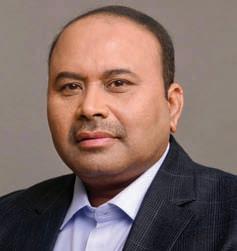
Production Co-ordinator DhananjayNidre
Scheduling & Coordination
Pushkar Waralikar
CIRCULATION
Mohan Varadkar

CONTENTS
The aheadjourney Public health in India:
The public health system needs to be reinforced authentically with involved efforts from all stakeholders | P-12

HEALTHCARE
DIAGNOSTICS
Express Healthcare®

Regd.With RNI No.MAHENG/2007/22045.Postal Regd.No.MCS/162/2022 - 24.Printed and Published byVaidehi Thakar on behalf of The Indian Express (P) Limited and Printed at The Indian Express Press,Plot No.EL-208,TTC Industrial Area,Mahape,Navi Mumbai-400710 and Published at Mafatlal Centre,7th floor,Ramnath Goenka Marg,Nariman Point,Mumbai 400021.
Editor: Viveka Roychowdhury.* (Editorial & Administrative Offices: Mafatlal Centre,7th floor,Ramnath Goenka Marg,Nariman Point,Mumbai 400021) * Responsible for selection of news under the PRB Act.Copyright © 2017.The Indian Express (P) Ltd.All rights reserved throughout the world. Reproduction in anymanner,electronic or otherwise,in whole or in part,without prior written permission is prohibited.
January2023 EXPRESS HEALTHCARE 7
P26: INTERVIEW DR
Joint
IT RADIOLOGY P10: INTERVIEW KALYAN SIVASAILAM Co-founder and CEO, 5C Network
SANJAYKATKAR
Managing Director & CTO,Quick Heal Technologies
P27:
DR
Senior Director,Hospital Laboratory Services and Senior Consultant-
Hospital
INTERVIEW
ANILHANDOO
Hematology,BLK-Max Super Speciality
POLICY
P24 ANAND
Officer
MADIA
on Special Duty to the Chief Minister, Maharashtra
A healthcare wishlist for 2023
Most medical experts have been reassuring us that 2023 will not see a COVID re-run of 2020. That India's COVID policy, of high vaccinations and gradual opening up followed by localised lock downs, gave most of the population good hybrid immunity from both vaccines and natural infections.
But Health Minister Mansukh Mandaviya has preferred to play it safe, cautioning that the next 40 days are critical as past data revealed a spike in India's case load 30-35 days after infection waves in East Asian countries.
With Finance Minister Nirmala Sitharaman set to present her fifth straight budget on February 1, 2023 the high probability of another COVID wave will ensure allocation to the healthcare sector will at least keep pace, if not increase, from the previous years.

But it will be crucial to allocate these funds wisely, supporting the weak links in India’s health infrastructure. Thus, policy makers should view 2023 as an opportunity to put into practice the hard lessons of the past three COVID years.
India’s public primary care network could be the best place to start addressing the weakest links. Spreading the spend to primary care, especially in rural areas and tier 3/4 cities, but looking much beyond COVID, has the potential to set right decades of neglect and reduce burden on expensive secondary and tertiary care facilities.
For instance, the Rural Health Statistics (RHS 2020-21) report shows that while there has been improvement, there is a long way to go, especially in certain states. Even out of the sanctioned posts, a significant percentage of posts are vacant at all the levels.
For instance, RHS 2020-21 data shows that as on March 31, 2021 21.1 per cent of the sanctioned posts of female health workers/Auxiliary Nurses and Midwives (ANMs) at Sub Centres (SCs) and Primary Health Centres (PHCs) were vacant as compared to 41.9 per cent vacancies of male health workers in 2021 at Scs.
After the SCs, the PHCs are the next contact point in India’s three tier rural health system, the village community’s first access point to a medical officer. RHS 2020-21 records that at PHCs, 64.2 per cent of the sanctioned posts of male and female health assistants and 21.8 per cent of the sanctioned posts of doctors were vacant in 2021.
The gaps are even more worrisome at the next level of care in the rural sector, the Community Health Centres (CHCs). As on March 31, 2021, out of the sanctioned posts at CHCs, 72.3 per cent of surgeons, 64.2 per cent of obstetricians & gynecologists, 69.2 per cent of physicians and 67.1 per cent of pediatricians were vacant.
These vacancies speak of the urban-rural divide in
India's public health infrastructure, even though digital health solutions like the e-Sanjeevni initiative are bridging some of these lacunae.
Thus 2023 will be about keeping track of COVID, without again neglecting old foes like TB, leprosy, and measles; chronic lifestyle ailments like diabetes and heart disease and also reining in Antimicrobial Resistance (AMR). Tracking climate change and emerging zoonoses will also keep health policy makers and epidemiologists sleepless.
But it's not enough to have policies, if they're not implemented speedily or in the proper manner. The medical device sector now is part of the PLI scheme but how many years will it take for medical device companies to actually use these funds, start projects and ensure India is self-sufficient in medical devices?
And will such schemes favour large companies or will SMEs lose out? Mirroring the pharma sector, there's reason to believe that the cluster approach, with shared resources, will be more beneficial for the larger number of SMEs.
While we make our wish list for 2023, let’s also work on better coordination and trust between government and private healthcare. Schemes like the Central Government Health Scheme (CGHS) have become long drawn out who-will-blink-first contests between the stakeholders. On December 29, based on representations from industry associations like the Association of Healthcare Providers in India (AHPI), the Special Secretary MOHFW extended the validity of CGHS empanelled hospitals to February 28, 2023 or till the new rates are finalised. While conveying this thanks to the ministry, Dr Girdhar Gyani, Director General, AHPI points out that the CGHS rates have remained unchanged since 2014. The hope is that the Ministry will agree to the association's long pending demand for better rates, given the overall inflation of costs and the financial unsustainability of waiting months for the health ministry to reimburse hospitals for treating CGHS beneficiaries. Will we see some resolution on this front in 2023?
Maybe 2023 can be a year for healthcare leadership to truly lead. As Nilesh Shah, Group President & Managing Director, Kotak Mahindra Asset Management puts it, “We need to invest in the healthcare sector for us and the world. We need to create Infosys, TCS and Wipro-kind of giants in the healthcare sector to serve the local and global populations.” And that’s top of my wish list for the healthcare sector in 2023.
VIVEKA
ROYCHOWDHURY Editor
viveka.r@expressindia.com viveka.roy3@gmail.com
EDITOR’S NOTE EXPRESS HEALTHCARE January2023 8
Keeping track of COVID, without again neglecting old foes like TB, leprosy,and measles; chronic lifestyle ailments like diabetes and heart disease and also reining in Antimicrobial Resistance (AMR) will make 2023 a challenging year

RADIOLOGY
Anumber of challenges impede radiologytraining in India
Diagnostic platform 5C Network have launched their artificial intelligence-powered platform called Prodigi.According to the company,the platform enables teleradiology at a massive scale,and makes it possible for diagnostic centres and hospitals to submit scans and access reports directly on the cloud-based platform. Kalyan Sivasailam ,Co-founder and CEO, 5C Network in an interaction with Kalyani Sharma explains about this platform and company’s plans for Indian market
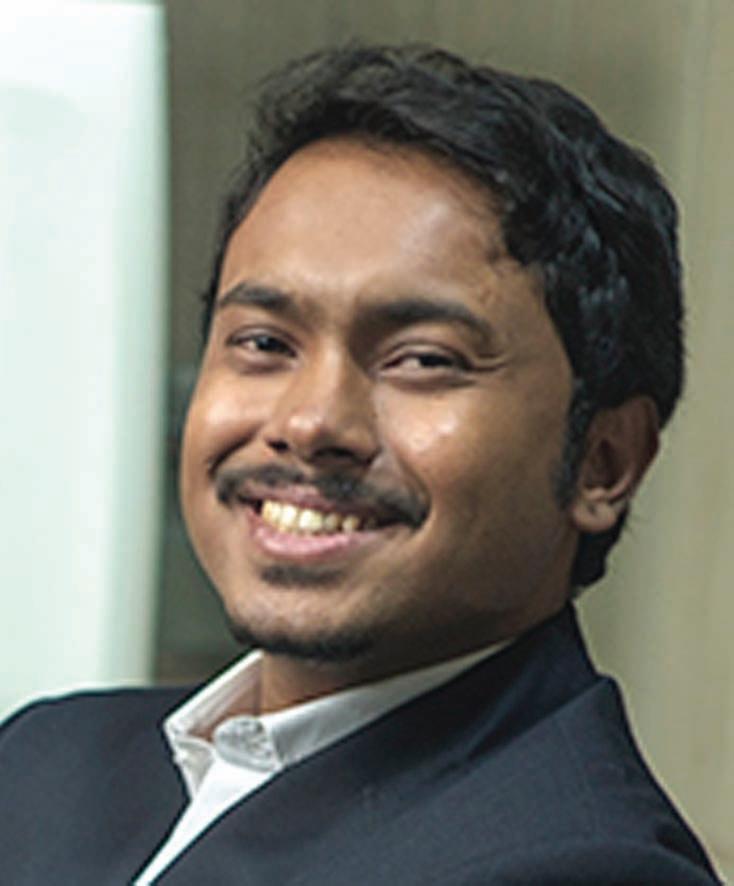
How is Prodigi different from 5C Network? What technologies are you using to revolutionise the radiology industry? AI integration into diagnostic platforms is helping in screening, early detection, faster diagnosis and identifying disease patterns. Will AI be extensively used in healthcare/diagnostics services? Why?
Prodigi is the tech backbone of our business. While 5C Network began life as a teleradiology services provider, over the past two years, the company has built a powerful and versatile software platform that serves as a marketplace for radio-diagnostics while also building a digital infrastructure to deliver better healthcare diagnostics in India.
AI will be extensively used in diagnostics services. In fact, AI has already been used in diagnostics and clinical trial solutions for the past few years. One of the primary ways AI has been used is to increase accuracy by detecting patterns in a given database. This has increased precision, especially in identifying diseases and determining whether a patient will respond to specific therapies. Another prominent role of AI is to help with early detection through machine learning
algorithms that can identify patterns through data and flag patients that are likely to benefit from specific treatments.
What is your plan for rural India, as they don't easily have access to such tests and have to travel to get the tests done?
Diagnostic establishments across the country are now easily able to get accurate scan reports through our platform. This is possible with our cloud-based platform that incorporates a smart PACS (Picture Archival and Communication System), which enables the scans to be viewed using a DICOM (Digital Imaging and Communications in Medicine) viewer and all images and reports stored securely in a searchable archival system. The core product is also being continually improved and enhanced to incorporate newer and more powerful algorithms and automations so that it can get better with time. This entire technology infrastructure prevents the need for people to travel long distances to big cities or metros to get accurate tests and reports done in one go.
What are the current challenges in radiology education and training in India? How can it be
improvised?
A number of challenges impede radiology training in India. Few and expensive schools with state-of-the-art facilities and experienced faculty are a significant issue. Other associated problems include a lack of practice certifications for radiographers, and emphasis on decisive and standard methods of radiology reporting. These lead to poor quality of imaging at the source as well as non-committal radiologist reports.
There are few schools with proper facilities and experienced faculty. Other associated problems include a lack of practical certifications for radiographers and an emphasis on decisive and standard methods of radiology reporting. In order to tackle these challenges, Prodigi has launched certification programs for radiographers that will focus on the latest and best practices for highquality imaging using existing equipment. The program will help radiographers understand the radiologists’ perspective, which in turn will enable them to generate better scans, ultimately improving patient outcomes.
Kalyani.sharma@expressindia.com journokalyani@gmail.com
EXPRESS HEALTHCARE January2023 10
INTERVIEW
AI will be extensively used in diagnostics services.In fact,AI has already been used in diagnostics and clinical trial solutions for the past few years.One of the primary ways AI has been used is to increase accuracy by detecting patterns in a given database.This has increased precision, especially in identifying diseases

The public health system needs to be reinforced authentically with involved efforts from all stakeholders




 ByKalyani Sharma
ByKalyani Sharma
EXPRESS HEALTHCARE January2023 12 cover )


January2023 EXPRESS HEALTHCARE 13
In the backdrop of spike in COVID-19 cases in China, PM Modi recently chaired a high-level meeting to assess the COVID-19 situation in the country, along with preparedness of health infrastructure and logistics, status of the vaccination campaign in the country and the emergence of new COVID-19 variants and their public health implications for the country. He stressed the need to ensure that the entire COVID infrastructure at all levels is maintained at a high level of preparedness in terms of equipment, processes and human resources. He advised states to audit COVID specific facilities to ensure operational readiness of hospital infrastructure, including oxygen cylinders, PSA plants, ventilators and human resources.
India has entered a new era in public health during the past few years. The COVID-19 pandemic made us realise the importance of strengthening the public health system even more. The stakeholders have been working on strategies focused on greater accessibility and availability of healthcare but we still need more high impact interventions in this direction.But as we near the third anniversary of the COVID-19 pandemic, there is also hope that the lessons of the COVID years are being translated into better implemented public health policies.
Explaining the true meaning of a public healthcare, Anurag Khosla, MD & CEO, Aetna India said, “Public Healthcare, doesn’t mean treating one patient at a time. It is structured on the pillars of affordability, availability, accessibility, acceptability and accommodation. Public healthcare is about diseases prevention for the community or the populace by the healthcare service providers by pinpointing and tapping epidemiological solutions. Clinical care along with healthcare outreach at scale are ways to curb the spread of diseases. A strong ground has to be etched to provide comprehensive primary
Apublic health cadre should not be solely focused on doctors but should be developed as an inter-professional cadre that also includes nurses,epidemiologists, social workers,policy and management experts,engineers and social scientists
Dr Santy Sajan Group COO,Paras Healthcare
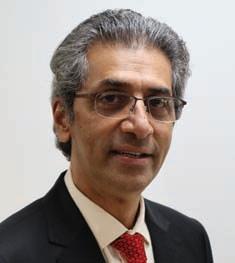
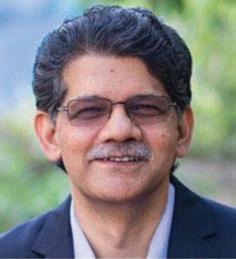

Public Healthcare,doesn’t mean treating one patient at a time.It is structured on the pillars of affordability,availability, accessibility,acceptability and accommodation
Anurag Khosla MD & CEO,Aetna India
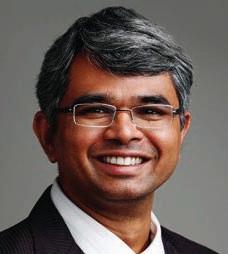
The COVID-19 pandemic has brought out the strengths and weaknesses of India’s social,financial,and health systems.It is time to introspect,learn,and resolve to build stronger and more resilient health systems that assure health security for all.
Dr Krishna Reddy Nallamalla Regional Director,ACCESS Health International President, InOrder,the Health Systems Institute
One of the key learnings from the COVID pandemic was the need for resilience focusing on how to manage disruption of supplies and mismatch between demand and supply for materials
Dr Anup Warrier Consultant- Infectious Disease & Infection Control, Aster Medcity
The global panic behind COVID-19 made us expedite the process of developing quick solutions for disease management and rapid vaccine deliveries
Dr CMABelliappa Chief Medical Officer,RxDx Healthcare
care, free essential drugs and diagnostic services, along with aiding financial risk protection to the vulnerable fragment rising from secondary and/or tertiary care hospitalisation.”
The previous waves of COVID-19 brought up many lessons needed to be learnt and implemented especially in the sector of public healthcare system, which was egregiously meagre to meet the health needs of the vastitude. While, India prepares itself for assumed new wave of COVID, it is important to understand and implement the learnings from the pandemic for a better and improved public healthcare system.
Health systems and policies play a crucial role in determining how services are delivered, utilised, and affect outcomes in the health sector. The public healthcare system across the globe is a collection of all the organised activities that prolong life, promote the health and efficiency of its citizens and prevent diseases, such as infections caused by viruses and bacteria.
According to the Centers for Disease Control and Prevention (CDC), "Public health systems are commonly defined as all public, private, and voluntary entities that contribute to the delivery of essential public health services within a jurisdiction." This article briefly states the lessons and how we learn them to make a better public health infrastructure. It aims to highlight critical concerns in India's public healthcare system and areas that require prioritising actions based on lessons learnt from the recent pandemic.
Experts throws light on the major learnings learnt from the previous waves:
Dr Krishna Reddy Nallamalla, Regional Director, ACCESS Health International President, InOrder, the Health Systems Institute said, “The COVID-19 pandemic has brought out the strengths and weaknesses of India’s social, financial, and health systems. It is time to introspect, learn, and

EXPRESS HEALTHCARE January2023 14 cover )
resolve to build stronger and more resilient health systems that assure health security for all. There are certain clear lessons that came out from across the globe. Countries with strong public health and primary healthcare saved more lives. Countries that engage and empower communities demonstrated resilience. Countries that have learned from previous health shocks and prepared their systems for the next shock fared better. Countries where universality prevailed over individuality as an ideology, could mount an effective collective response. Countries in which people trust their leadership and government did better. Countries that invest in research and development had a clear edge in their response to tackling the pandemic.”
Dr Anup Warrier, Consultant- Infectious Disease & Infection Control, Aster Medcity said, “One of the key learnings from the COVID pandemic was the need for resilience - focusing on how to manage disruption of supplies, how to manage sudden absence of healthcare workers and how to manage the mismatch between demand and supply for materials (including lifesaving oxygen). The importance of local manufacturing to preserve supplies and "stewardship" in utilisation of scarce/important resources (medicines/oxygen) was well acknowledged during this period. Going forward, robust systems to ensure quality of locally manufactured products and sustainable oversight mechanisms for ensuring appropriate utilisation of resources will be extremely important. This means establishment or increasing the scope of existing regulatory bodies that will be able to carry out this activity.”
Dr CMA Belliappa, Chief Medical Officer, RxDx Healthcare stresses, “The global panic behind COVID-19 made us expedite the process of developing quick solutions for disease management and rapid vaccine deliveries. Unfortunately, and as a

hard lesson, we have learned that necessary innovation in healthcare occurs during a tough time, and with the cost of many lives. Going forward, we should be better prepared to
handle any unprecedented health crises in the future. By devising effective remedial actions and implementing proactive measures in the system, public health can be well
augmented for the common good.”
Dr Karthiyayini Mahadevan, Head, Wellness and Wellbeing at Columbia Pacific Communities highlights, “Pub-
lic health system, though designed well, needs to be reinforced in an authentic manner with involved efforts from the government and related agencies to gain the confidence of
January2023 EXPRESS HEALTHCARE 15
the larger communities so that they benefit from it.”
There are many ways in which public health systems can be improved. From encouraging innovation and manufacturing of medical equipments, vaccines, PPE in the country to spending more on medical research, the system needs investment. There is a lot that can be done both in the long and short term to stabilise the public health system.
Akshat Bhatt, Principal Architect, Architecture Discipline said, “The COVID-19 pandemic exposed a severe lack of healthcare infrastructure across the world. India has also fared poorly on health infrastructure indices for many years-the Human Development Report 2020 shows a national ratio of only five beds per 10,000 people. This inadequacy was further exacerbated during the COVID-19 pandemic resulting in medical infrastructure being placed under extreme stress. As governments around the world were forced to set up temporary and makeshift hospitals to help deal with the growing number of patients, it became apparent that upgrading infrastructure to meet the needs of a burgeoning population by conventional methods was too slow a process. I believe that to address situations like this, we need to do two things– have a longer development cycle, which may be larger, slower interventions, and an immediate system that can be rapidly deployed. In unprecedented scenarios such as the outbreak of the corona virus, nimble and agile systems need to be put in place to augment existing infrastructure.”
Infrastructural development and investment
Strong public health infrastructure is the foundation of all public health services from vaccinations to chronic disease prevention programs to emergency preparedness. It should address the health departments, workforce development
Public health system,though designed well,needs to be reinforced in an authentic manner with involved efforts from the government and related agencies to gain the confidence of the larger communities so that they benefit from it
and training, data and information systems, planning, and partnerships.
In unprecedented scenarios such as the outbreak of the corona virus,nimble and agile systems need to be put in place to augment existing infrastructure.
Akshat Bhatt Principal Architect,Architecture Discipline


With a well-equipped infrastructure,public health system can provide high-quality, long-term,patient-centred services for both planned care and unforeseen pandemics
Sharing her views on this, Sunayana Singh, CEO, ORGAN India said, “Infrastructure is crucial to improve the quality of treatment, diagnosis and welfare of all patients. Currently there is a huge disparity in public healthcare infrastructures and private healthcare infrastructures. There is a need to bridge this gap. The healthcare system must be able to cater to a population-wide health promotion, prevention, and self-care module. Better infrastructure will ensure quicker and less expensive healthcare. With a wellequipped infrastructure, public health system can provide high-quality, long-term, patient-centred services for both planned care and unforeseen pandemics.”

The HCPs across public and private provider facilities need to be trained to a certain benchmark of technology adaptation to provide quality healthcare support even in rural areas
Mohit Sood Regional Managing Principal,ZS

Elaborating on the challenges, Arti Gugnani, Partner, Vijay Gupta Architects said, “It’s become clear that hospital infrastructure in India today needs to cater not only to the burgeoning population but also be ready to tackle the demands of a pandemic like COVID. The reality, which became only more pronounced because of the pandemic, is that there remains a massive gap in the doctor to population ratio, with a doctor to patient ratio of 1:1500. The patient to hospital bed ratio is worse, not helped by the surge of patients during times of crisis. What this presents is an opportunity to rethink how we plan healthcare infrastructure, especially for a rural population that forms a majority of our country. The need of the hour is more professionals to cater to the masses, which inevitably means setting up more medical colleges. The shortage of trained professionals does not just pertain to doctors, but also trained nursing staff, that ensures the day-to-day functioning of a hospital. This shortage could be addressed through attaching medical colleges to existing government healthcare centres, setting up training
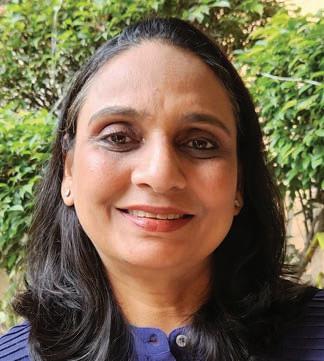
EXPRESS HEALTHCARE January2023 16 cover
)
Dr Karthiyayini Mahadevan Head,Wellness and Wellbeing at Columbia Pacific Communities
Sunayana Singh CEO,ORGAN India
It’s become clear that hospital infrastructure in India today needs to cater not only to the burgeoning population but also be ready to tackle the demands of a pandemic like COVID
Arti Gugnani Partner,Vijay Gupta Architects
India
facilities as a compulsory add-on to existing medical colleges, etc.”
Talking on the similar lines, Mohit Sood, Regional Managing Principal, ZS India said, “There are rapid headwinds in acquiring the right talent for meeting the demand of skilled healthcare professionals, at the same time, upskilling the existing workforce is equally crucial. In the coming times, technology will fuel the health cycle for any individual through AI and digital interventions at all the stages starting from awareness, diagnosis to treatment and recovery. The HCPs across public and private provider facilities need to be trained to a certain benchmark of technology adaptation to provide quality healthcare support even in rural areas.”
Dr Santy Sajan, Group COO, Paras Healthcare stresses, “The existing health professional education system in India does not emphasise the acquisition of management and public health skills. Although they receive training in individual clinical treatment, doctors are rarely given the right learning opportunities to manage healthcare facilities and programmes or perform population health duties. To support community health involvement, disease surveillance and response systems, management of health promotion and p revention programmes, monitoring, and evaluation, as well as leadership and team management of funds and other resources, a wide range of competencies are required. A public health cadre should not be solely focused on doctors but should be developed as an inter-professional cadre that also includes nurses, epidemiologists, social workers, policy and management experts, engineers and social scientists. This will enable them to work in inter-professional teams that can address the full spectrum of population health needs within India's complex health system.”
Public health services have
In a few states such as Kerala,Tamil Nadu and Delhi public health facilities play their intended role of being the first point of care but that’s not the case in Uttar Pradesh,Bihar & Jharkhand
Rajapandian
There is an urgent need to upgrade,modernise and expand the infrastructure. Public and private entities must ramp up their investments into the healthcare sector
Runam Mehta CEO,HealthCube
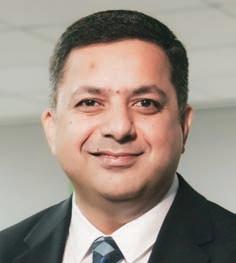



The pandemic has also taught us the criticality of access to real-time data, improved monitoring and isolation facilities,and better diagnostics
Dr Shuchin

Although the investment levels are growing,they remain minuscule against what is required to achieve universal healthcare in the country or to achieve the Sustainable Development Goals
The aspects of public health system that should be the focus of government policy and expenditure are identification of the diseases that need focussed treatment/eradication
not been focused upon for decades in the majority of Indian states. However, public health services have proven to be irreplaceable during the crisis. They've shouldered the lion’s share of not just preventive and outreach services but also clinical care. In fact, states with robust public health systems like Kerala have been far more successful in containing the spread of the infection, compared to richer states like Maharashtra and Gujarat, which have under-staffed public health systems. Considering these facts now is the time to reinvent and rejuvenate public health services across the country.
Talking about inter-state and intra-state variations, Rajapandian R, Chief Executive Officer, Sustainable Healthcare Advancement (SUHAM) Trust said, “In a few states such as Kerala, Tamil Nadu and Delhi public health facilities play their intended role of being the first point of care but that’s not the case in Uttar Pradesh, Bihar & Jharkhand.”
Stressing on the investment part, Runam Mehta, CEO, HealthCube said, “Significant investment in public health infrastructure is critical. Currently, there are insufficient investments to set up diagnostic labs and basic healthcare facilities or necessary equipment. Even in places where diagnostic infrastructure exists, it is out-dated. Dilapidated machines that frequently break down or give incorrect assessments are as dangerous as not having the diagnostic support. Budgetary allocations are inadequate to fund new infrastructure. Most of the budgets are spent on maintaining the existing infrastructure and paying salaries of medical staff.”
“There is an urgent need to upgrade, modernise and expand the infrastructure. Public and private entities must ramp up their investments into the healthcare sector. While setting up more medical education, research and development facilities, and innovation
January2023 EXPRESS HEALTHCARE 17
R Chief Executive Officer,Sustainable Healthcare Advancement (SUHAM) Trust
Bajaj Founder Director,Ujala Cygnus Group of Hospitals
Himanshu Sikka Practice Lead-Health,Nutrition and WASH IPE Global
Mohit Nirula CEO,Columbia Pacific Communities
centers is important, it is also time to reimagine how we deliver care. Development and deployment of cost-effective digital diagnostic devices is a viable option. It leads to convenient, quick, accurate and low-cost access to diagnostic support in all terrains & climatic conditions. This model will also lead to early identification disease and help with prevention. Thus, insurers get to pay less claims and the government can better utilise its healthcare allocations. Adequate funding and determination will help to achieve the goal of quality healthcare and a better life for all Indians”, she added.
On the investment part, Dr Warrier highlights that, “Worldwide, the major reason for fatalities in the pandemic was a mismatch between the available healthcare infrastructure and the demand of specialised healthcare services - like oxygen support and ICU management. The importance of appropriate triaging in the community/home/OPD, early identification of those who require hospital-based care and those who require ICU based care was essential in allocation of resources as per need and not as per "first come, first serve" basis. We realise that we need significantly more special care beds - air borne isolation and ICU. However, it's impossible to create the ideal ICU requirement beds and airborne isolation rooms in anticipation and not have any utilisation. Hence, the hospital design and planning must consider "pandemic preparedness" - investments focusing on indoor air quality, interventions like upper room UV irradiation, provisions for scaling up the electrical/medical gas/vacuum lines to initiate ICU care when required. The government must also invest in a regulatory body/oversight committee that may be able to ensure appropriate utilisation, prevent wastage of resources and monitor outcomes with cost optimisation. Hence, the investments in public health
Accessibility,Affordability and Quality of healthcare remains a challenge for India
Atul Kurani-VP Global Head, Medical Practice & IOT, Capgemini Engineering
Healthcare data needs to become a policy focus for India.Currently,this data in India is largely unavailable or fragmented
Dr Vishesh Kasliwal Founder & CEO, Medyseva
Healthcare personnel will need to learn how to harness data and understand it to enhance medical practitioners' decisionmaking as technology and healthcare analytics are increasingly used to treat diseases
Vikram Thaploo CEO,Apollo Telehealth

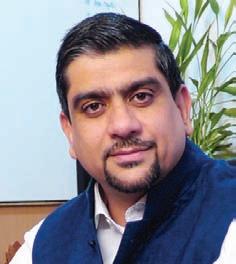

With aging infrastructure & increased demand for more beds,it is essential to optimise inpatient and outpatient settings and integrate digital technologies
Manoj
The country's public healthcare system must keep up with technological advances and their implications for citizens' health. We should be aware that data is essential for any public health program and need for evidence-based decision-making
Satish Kannan Co-founder & CEO,MediBuddy
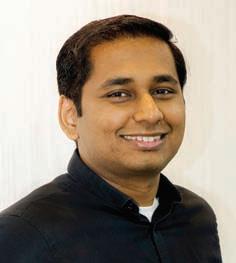
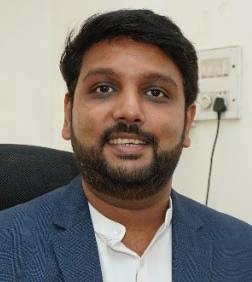
must not be limited to "built infrastructure" but also in building "systems" that ensure rational utilisation of the resources.”
Dr Shuchin Bajaj, Founder Director, Ujala Cygnus Group of Hospitals talks about the increased investment in public health sector, especially bolstering infrastructure, and facilities in tier 2 & 3 cities. He added, “The gaps and lack of investment in healthcare centers were prevalent at the peak of the pandemic when fatality rates were high and increased hospital load. This made us realise the need to increase clinics and hospital chains in these cities so that the residents have equal access to quality healthcare systems and robust insurance plans. The pandemic has also taught us the criticality of access to realtime data, improved monitoring and isolation facilities, and better diagnostics. It is high time that the infrastructure in these areas is ramped up. In that direction, our healthcare bodies would need to make a substantial amount of investment in this sector regularly, which it has shown strong signs of in the past two years.”
Stressing on the importance of health financing, Dr Nallamalla added, “Health financing remains a critical issue both for strengthening fragile health systems and for protecting people against financial hardships in seeking the needed healthcare. Both the central government and state governments have limited fiscal space to immediately increase the budgetary allocation to health, despite a consensus that public health expenditure should increase to 2.5 per cent of the GDP. In this context, an alternate solution is to increase the efficiency and effectiveness of public health financial management. Nearly 20 percent of the allocated budget remains unspent every year. An additional 20 percent of the expenses are being spent on low-value care (consulting, diagnostic, and treatment services that are not
EXPRESS HEALTHCARE January2023 18 cover
)
Choudhury Director,Edifice Consultants
needed). Corruption eats further into the meager budgets. The productivity of the health workforce can be improved by addressing absenteeism. The end goal of Universal Health Coverage (UHC) is still a distance away. Innovative insurance and health consumer financing models leveraging the power of fintech and insurtech digital solutions should be explored while the country inches towards UHC.”
Himanshu Sikka, Practice Lead-Health, Nutrition and WASH IPE Global Limited gives an overview of the current investment level. He said, “In the Economic Survey of 2022, India's public expenditure on healthcare stood at 2.1 per cent of GDP in 2021-22 against 1.8 per cent in 2020-21 and 1.3 per cent in 2019-20. While many critiques would comment on this substantial increase as plain accounting jugglery, the fact remains that several public sector schemes launched in the last few years, including the Pradhan Mantri Ayushman Bharat Health Infrastructure Mission, have focused on building last-mile infrastructure, which has been depriving the 40 per cent bottom of the pyramid population (over 500 million people) of quality and affordable healthcare services. The same mood can be seen in the private healthcare sector. The commercial investment levels for healthcare, which stood at half a billion US dollars (US $) per year for the first half of the last decade, had seen the market opportunity India presented and reached levels of US $800900 million in pre-COVID years. The pandemic pushed these investment levels to US $1.2 - $1.3 billion per year and are expected to be close to US $2 billion by the end of the current financial year. In terms of Official Development Assistance from OECD countries to India, though the grant-based funding came down considerably in the last decade, the confidence of multilateral financial institutional lenders like the World Bank and ADB grew to
While access to care has dramatically improved in recent times,the focus should also shift towards producing measurable health outcomes at population level around areas like prevention,chronic disease management,lifestyle,and nutrition
Srinivasa Vivek Co-Founder,Resolute Active Care

We will have to re-examine our current capacities for service provision from two dimensions: adequacy and distribution.
Prof.Sanjay Zodpey


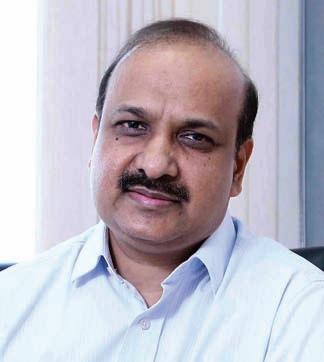
President,Public Health Foundation of India (PHFI) Perhaps this year is the time to map the current coverage of PHCs as well as the sub-centres,along with community health centres as well as tele-health options and be pragmatic about making this jigsaw puzzle of taking health to the last mile work
an all-time high for sovereign lending to the health sector. Both institutions manage a US $2-3 billion health sector portfolio for the country. They have further approved new billion+ dollar loans to support Government of India programs and schemes in the current year.”
Embedding digital technologies into policies can make the entire process a lot more seamless and accessible for people across the country
Developing preventive rather than reactive mechanisms and enhancing the necessary components of community information,mobilisation and participation is the key
Dr Vishwanath VBellad HOD & Senior Consultant Pulmonologist,BGS

Highlighting the challenges and the promise of blended finance and impact investing, he added, “Although the investment levels are growing, they remain minuscule against what is required to achieve universal healthcare in the country or to achieve the Sustainable Development Goals. Public health infrastructure is a high government priority, with most public sector funding focused on lower-tier towns and rural areas. However, the participation of the private sector in the same has been limited. Private capital has largely found a home in major metros and tier-1 towns and shied away from riskier propositions of funding infrastructure focused on providing affordable care to the bottom of the pyramid, hard-to-reach, and vulnerable populations. These have been largely left for being serviced by the public sector. This dichotomy of funding has meant that social enterprises, typically healthcare start-ups and Micro, Small & Medium enterprises, providing affordable healthcare and focussing on lower-tier markets and rural areas, have remained wanting affordable capital to scale their operations. The situation gets exacerbated when mainstream banks for whom health forms part of priority sector lending in the country are also not comfortable financing the MSME and earlystage enterprises in this sector and see the space as high risk and long gestation. This was quite visible in the limited uptake for the Loan Guarantee Scheme for COVID-Affected Sectors (LGSCAS) launched by The National Credit Guarantee Trustee Company Ltd (NCGTC).”
“Government is privy to
January2023 EXPRESS HEALTHCARE 19
Shrirupa Sengupta Associate Director,Swasti,The Health Catalyst
Paul Abraham President,Hinduja Foundation
Gleneagles Global Hospital
these challenges and encouraging homegrown innovations both tech and process that can help it achieve its universal health care mandate. The government also recognises that new ways of working are required to unlock greater commercial investments to supplement its limited resources. Blended Finance, which looks at leveraging commercial capital for social enterprises by derisking investments using grant/philanthropic capital, along with Impact Investing, is thus emerging as a promising potential solution.”
Mohit Nirula, CEO, Columbia Pacific Communities shares the aspects public health system that should be the focus of government policy and expenditure which are, “identification of the diseases that need focussed treatment/eradication; development of a series of high-impact steps that need to be taken to address identification of disease, reporting, treatment execution combined with real time monitoring of performance data; communication through mediums that reach the at-risk population with the objective of increasing awareness and finally and political commitment to allocate resources to fund these initiatives and ensure achievement of mission objectives.”
“It is a travesty that while government expenditure on public health systems has tripled over the last decade (from Rs 23.5 thousand crores to Rs 62.6 thousand crores), the share of government spending has remained moribund at about 1.3 per cent of GDP spiking only in the last couple of years only on account of COVID-19. In comparison, developed nations such as the US and Japan spend close to 10 per cent of their GDP on their public health systems.”
Role of connected health in public health
Digitisation and connected healthcare have the power to enhance overall accessibility and availability of care. It can
also help in empowering the large population at the same time. The pandemic highlighted the role of technology on a large scale. Technologies like telehealth and remote patient monitoring saw prominent adoption during the pandemic.
Technology has been effectively used in training healthcare workers, digitising health records, diagnosing and detecting health problems, and more. A patient can leverage health-related data to efficiently receive personalised and proactive care. Devices and services are also designed around a patient's needs. Connected health effortlessly links
and empowering the rural & semi-urban primary care clinicians in taking informed decisions focused especially on chronic diseases management. This will enable transition into a more proactive/preventive care than being reactive, one of the main reasons for high mortality rates in the country.
Additionally, India, with a robust digital connected backbone, can facilitate large community based clinical trials necessary to prove the efficacy of the products getting developed for our markets, driven by value-based health outcomes.”
sights into strategies to improve the effectiveness and efficiency of health services and measuring the impact of new health policies and interventions.
healthcare services in real time to those who need it the most.”
all integral pieces of a healthcare system through technology to ensure medical facility, services, and care for all, anytime and anywhere.
Talking about connected healthcare, Atul Kurani-VP, Global Head, Medical Practice & IOT, Capgemini Engineering said, “Accessibility, Affordability and Quality of healthcare remains a challenge for India. Lakhs of patients go without access to primary healthcare every day due to poor Healthcare infrastructure, shortage of doctors, poor diagnosis, wrong treatment, high cost, inadequate medicines which results in millions of deaths every year. Through data and technology enabling connected health solutions, India’s focus of improving access, affordability, and quality of care with reduced human errorscan be achieved with specialist opinion available to the rural/semiurban masses where we have over 70 per cent of the populations residing. Digital platforms will enable in educating
Dr Belliappa while emphasising on the role of digital channels added, “As the pandemic-induced lockdowns restricted the overall movement of people, telemedicine turned out to be a game changer in that period. It has also prevented crowding at medical facilities. A large number of people have been treated through apps and other digital platforms, which became an integral part of public health. By incorporating health services through digital communication channels, people from remote areas where even bare essential medical services are often unavailable will receive a great amount of assistance.”
Healthcare data and disease surveillance are also crucial and play a much bigger role in preventing and managing the future pandemics. By leveragingdataduring the pandemic, thehealthcare sector has been able to trace thepandemic'sspread, monitor populationhealth.
Sharing health systems data with the research community can alsoprovide in-
Dr Vishesh Kasliwal, Founder & CEO, Medyseva said, “Healthcare data needs to become a policy focus for India. Currently, this data in India is largely unavailable or fragmented. This is because there is no single system integrating information of patients seeking services at private and public delivery points. Without such data, good policy-making cannot be expected. During the pandemic, we witnessed some examples where good data collection and analysis, by some government as well as volunteer organisations, led to good decisions. For example, there emerged a number of platforms to track case numbers, fatalities, hospital bed availability and so on. State governments such as that of Tamil Nadubuilt GIS platforms to track containment zones and hotspots of infection, thereby deploying the necessary resources to the areas that required them. This needs to be replicated on a large scale to cover the entire country and the large spectrum of diseases. Usingbig datain healthcare with electronic health records, government records, laboratories and insurance companies can provide a rich source of information to healthcare providers to assess clinical risk and genetic susceptibilities. Combining healthcare data with other parameters related to transport and housing, for instance, could be used to generate healthcare plans and deploy
Vikram Thaploo, CEO, Apollo Telehealth opines, “Healthcare personnel will need to learn how to harness data and understand it to enhance medical practitioners' decision-making as technology and healthcare analytics are increasingly used to treat diseases. Additionally, as COVID19 has drawn attention to the necessity of managing epidemics and pandemics, there must be a mandate for public health professionals in government. IoT can also be utilised to gain useful insights from data collected from electrocardiograms, temperature monitors, blood glucose levels, and foetal monitors. Smart IoT devices can deliver the necessary health data remotely, reducing the necessity for face-to-face interactions between patients and doctors. In an IoT world, various distributed devices will collect, analyse, and transmit real-time medical data to open, private, or hybrid clouds, enabling the collection, archival, and analysis of large data streams in multiple new forms as well as the activation of context-sensitive alarms.”
Stressing on the need for designing healthcare spaces accommodated with modern technology, Manoj Choudhury, Director, Edifice Consultants added, with aging infrastructure & increased demand for more beds, it is essential to optimise inpatient and outpatient settings and integrate digital technologies like Telemedicine, Artificial intelligence, Robotics, Precision medicine, Genomics, IoMT, EMR, and Cloud Computing into traditional services. Even in the pre-COVID era, digitisation was considered the best way to transform healthcare practice, the pandemic has led us to prioritise patient-centric remote monitoring solutions. Healthcare environments are not just buildings accommodating modern technology for treating ailments and diseases. To facilitate the dual purpose of
EXPRESS HEALTHCARE January2023 20
cover )
Sharing health systems data with the research community can also provide insights into strategies to improve the effectiveness and efficiency of health services and measuring the impact of new health policies and interventions
supporting the future health workforce and meeting the medical challenges of our time, we must design our healthcare systems to navigate a holistic approach. In India, the healthcare sector largely depends on the public healthcare system for its population. Today, the private healthcare sector has emerged to provide the majority of secondary and tertiary care in metros, tier I and tier II cities. Inn ovative long-term partnerships between the public and private healthcare sectors can bring about a significant change in the system, especially during an unanticipated crisis like COVID-19. Therefore, designing the right built environment with sufficient investments from the stakeholders plays a strategic role in shaping the future of healthcare.”
Satish Kannan, Co-founder & CEO, MediBuddy believes that the adoption of technology is the future of healthcare. He highlights, “The country's public healthcare system must keep up with technological advances and their implications for citizens' health. We should be aware that data is essential for any public health program and need for evidence-based decision-making. The Integrated Disease Surveillance Program has been the backbone of the country, where the decentralised surveillance mechanism attempts to conduct indicator and event-based surveillance to respond to public health emergencies as soon as possible. The system must be strengthened further, prioritising staff capacity building. Laboratory networks must be expanded so that basic testing facilities are available at all of the country's peripheral health/wellness centres. Public health laws require the private health sector to participate in disease surveillance mechanisms actively. To get a more regularised healthcare infrastructure, Government policies launching universal healthcare initiatives, such as the National Digital Mission and Ayushman Bharat, would
aid in centralising health insurance and convenient access to healthcare. Consistent progress and inn ovation in biomedical science would be another feather in the hat of the Indian healthcare infrastructure facility. The entire ecosystem needs a targeted approach while addressing these significant issues.”
Srinivasa Vivek, CoFounder, Resolute Active Care stresses, “It is evident that the public health infrastructure has become hybrid with both digital and physical care delivery. While access to care has dramatically improved in recent times, the focus should also shift towards producing measurable health outcomes at population level around areas like p revention, chronic disease management, lifestyle, and nutrition.”
Leveraging the power of policymakers and acknowledging the importance of preventive care
India has a large network of Primary Health Centres (PHCs) and sub-centres along with community health centres, mobile vans and traveling health camps. The health subcentre, as defined by the National Health Mission is the most peripheral and first contact point between the primary health care system and the community. Despite this seemingly fool proof framework, the picture on ground still requires attention.
Prof. Sanjay Zodpey, President, Public Health Foundation of India (PHFI) explains, “We will have to re-examine our current capacities for service provision from two dimensions: adequacy and distribution. While two-thirds of India lives in the rural and semi-urban areas, our health care
services, especially in the private sector, are located in urban areas. This creates a situation wherein there is a greater stress on the health infrastructure, both public & private, in the rural areas of the country during a pandemic. This is a structural problem which does not have a short-term solution. The government has significantly increased the capabilities of district hospitals in the past five years and is committed towards implementing the updated Indian Public Health Standards for health care institutions. This is a welcome step and will certainly yield positive results in the mediumterm. The community is the focal point for all the public health action. It has the capacity to amplify the government’s response through its meaningful participation. Community participation is dependent on a clear and sound call to action. The state and district health systems will have to travel the extra mile through the formal and informal networks that exist within the community. The presence of the Health and Wellness Centres across the country will provide the last mile connect, but we will need a continuous engagement with the community on all health matters round the year for it to partner with us at short notice. We will have to think of newer paradigms of community engagement in health in the times to come. We will have to maintain emphasis on supporting government efforts through a broad-based partnership with voluntary organisations, civil society, and non-governmental organisations.”
Shrirupa Sengupta, Associate Director, Swasti, The Health Catalyst highlights, “Sadly, in many poor states, such as Madhya Pradesh,
Bihar and Jharkhand, a PHC covers as many as 45,000, 49,000 and 76,000 people. And while tele-medicine/tele-health is an approach that the Government of India is keen onthe digital divide persists. And, the current location of PHCs is also not too helpful. Let us take for example In Rajasthan, the population is often so dispersed (especially in hilly areas in the south and in the desert in the west) that a family may need to travel 10-20 km to reach the nearest health centre. Perhaps this year is the time to map the current coverage of PHCs as well as the subcentres, along with community health centres as well as telehealth options and be pragmatic about making this jigsaw puzzle of taking health to the last mile work. All the while keeping in mind the reality of the digital divide and the hurdles of rural transport. At present under all the plans of Government of India, the PHCs are expected to deliver centrally designed, targeted vertical programs. While from a clinical perspective this may be a great logic map, it ends up alienating PHCs further from communities and this may be the right time to rethink the PHC framework also in line of how health and wellbeing is partnered between the communities at the last mile and the Primary Health Care system.”
Talking about leveraging the power of policy makers, Paul Abraham, President, Hinduja Foundation said, “There is no doubt that India’s public healthcare system is in dire need for the intervention of policy makers and government initiatives. There has been a modest increase in budget allocations over the last few years, but this has to increase to a large extent. The
recommendation of the National Health Policy is that budget outlay of both Centre and State should be increased to over 2.5 per cent. Further, it is also recommended that state budgets are allocated with an increased 8 per cent of the total budget. The Prime Minister’s Ayushman Bharat Digital Mission (ABDM) is a quintessential example of government intervention to better the public healthcare system. The country needs more such interventions. Embedding digital technologies into such policies can make the entire process a lot more seamless and accessible for people across the country.”
Dr Vishwanath V Bellad, HOD & Senior Consultant Pulmonologist, BGS Gleneagles Global Hospital emphasises, “Developing preventive rather than reactive mechanisms and enhancing the necessary components of community information, mobilisation and participation is the key. It highlights the need to greatly increase human and financial resources and the regulation of the private sector to curb profiteering from the pandemic and reduce out-of-pocket expenditures.”
Sood added, “post-pandemic there has been a rise in general health awareness among people highlighting that the focus needs to shift from curative to preventive healthcare. Early and timely diagnostics through access to medical records using digital health tech would bring emphasis on addressing the medical needs of a patient before it becomes life-threatening.”
Wayforward
Enhanced preparedness and response system, creating quality healthcare infrastructure and broadening the community engagement in health will go a long way in not only strengthening the public health but also managing the future pandemics.
Kalyani.sharma@expressindia.com journokalyani@gmail.com
January2023 EXPRESS HEALTHCARE 21
Digitisation and connected healthcare have the power to enhance overall accessibility and availability of care
Public health in India has moved into a newphase
The COVID-19 pandemic, which upended even the most advanced healthcare systems in prosperous nations, also affected India's healthcare system, posing unprecedented and catastrophic risks. Indian healthcare responded quickly to the situation by working closely with the public and private sectors and isolating patients, developing treatment plans, building isolation facilities, and producing vaccines.
Battling the pandemic
Our nation reported 4.14 lakh COVID-19 cases per day at its height in May 2021, when there was also a severe lack of beds in hospitals and critical medical supplies. The government's prompt response somewhat lessened this. Indeed, the entire journey has been tumultuous, particularly in public health.
Even though India has made progress in all areas, including healthcare, the pandemic has opened our eyes. It has identified the areas in our public health system that need immediate improvement and forced everyone to concentrate.
In recent years, public health in India has moved into a new phase. The COVID-19 pandemic increased our awareness of bolstering the public health system. Although the stakeholders have been working on initiatives to increase healthcare availability and accessibility, we still want more high-impact interventions in this area. But there is also hope that, as we approach the third anniversary of the COVID-19 pandemic, the lessons we learned are being applied to stronger public health policies.
There are a fewlessons learned for a better public health system in the upcoming year
Increased attention to tier 2 and tier 3 cities' medical infrastructure and facilities: The gaps and lack of investment in healthcare facilities were widespread at the height of the pandemic when mortality rates were high and hospital loads skyrocketed. As a result, there is a need to expand the number of clinics and hospital networks in these cities so that everyone can access reliable insurance coverage and high-quality healthcare systems.
Increasing investment to improve monitoring: The epidemic has taught us the importance of having real-
time data access, better monitoring and isolation facilities, and enhanced diagnostics. The infrastructure in these places has to be improved immediately. For so, our healthcare organizations would need to consistently invest a large sum in this area, which it has shown clear signs of doing over the previous two years.
Enhanced cooperation with other countries: The epidemic affected almost every region of the world. The barriers had no effect in stopping the virus's spread. So, another thing to keep in mind is the need for global cooperation. Nations must cooperate, spread awareness, learn from one another, and establish a monitoring system to gather early warnings and stop the
catastrophic effects of such dangers in the future. Innovation in biomedical science continues to advance: Whether it was the creation of COVID-19 drugs or the pandemic vaccines, we saw how quickly science could advance when there is a coordinated and focused effort, with a lot of backing from regulatory bodies
now able to diagnose and treat patients at home with great speed thanks to telemedicine, remote monitoring, and instantly accessible testing, interpreting, and prescribing capabilities. Furthermore, patients won't need to be hospitalised thanks to digitally improved preventive treatment. With the help of

and international healthcare organisations like the WHO. To prevent such health hazards in the future, biomedical science must make constant progress. Future lifesaving advances in fields like gene therapy and telemedicine could be facilitated by investments made now.
Government initiatives: Plans to develop national healthcare programs, like the National Digital Mission and Ayushman Bharat, might be helpful during upcoming health epidemics regarding centralised insurance and universal access to healthcare. The virtualisation of healthcare: It will improve pre and post-hospital care, allowing for healthcare delivery in patients' homes. Caretakers are
digital technologies, patients can recover at home with their loved ones while still having access to the knowledge and professional care they require.
The COVID-19 outbreak was the vilest health crisis ever affecting India's public health system. A new emphasis on healthcare has emerged as a result of COVID-19. While revealing the many flaws in our healthcare system, it also highlighted creativity, entrepreneurship, and a never-before-seen zeal to confront these issues. As a result, more capable patients and healthcare professionals
emerge with the resources and expertise required to receive
offer
EXPRESS HEALTHCARE January2023 22 cover )
will
and
high-quality medical care.
Chandra Ganjoo,Group Chief Executive Officer,Trivitron Healthcare emphasises that even though India has made progress in all areas,including healthcare,the pandemic has opened our eyes.It has identified the areas in our public health system that need immediate improvement and forced everyone to concentrate
The COVID-19 pandemic increased our awareness of bolstering the public health system.Although the stakeholders have been working on initiatives to increase healthcare availability and accessibility,we still want more high-impact interventions in this area
India’s G20 leadership is an opportunityto further advance the population,health and development agenda
Two events – seemingly unconnected – hold tremendous prospects for India in 2023. First, India has taken over the presidency of the G20 and will host the G20 Summit in 2023. Second, India’s population will overtake China’s, according to the United Nations’ World Population Prospects 2022 report, bringing India’s population into the spotlight yet again. Both these developments give India great authority as well as a responsibility to shape the national and global development agenda. This will also be an opportunity to counter voices that have expressed fear that as the world’s most populous country in 2023, India will find it hard to make optimum use of its limited financial and natural resources which will fall short of the country’s needs. This is despite available evidence to suggest that over the past 25 years, the richest 10 per cent of the global population has been responsible for more than half of all carbon emissions.
In recent times, the urgency to “control” the population has also been voiced by certain sections of society. A simplistic interpretation of numbers is a dangerous thing as it leads to unfounded fear. While the ‘concern’ about India’s growing population is familiar, it is unwarranted. Data collected in the fifth round of the National Family Health Survey (2019-21) shows that India has achieved the replacement level fertility rate at which a population replaces itself with next generation. However, India’s population will take some years to stabilise as the country is under-
going ‘population momentum’ due to its large young population around 30.9 per cent of India’s population comprises young persons in the age group of 10-24 years who are or will soon be in the reproductive age
group. Even if a couple from this age group has less than two children per couple, they will add to the total population because of their significant absolute numbers.
Given India’s large popula-
tion in the reproductive age group, ensuring family planning and sexual and reproductive health services reach the last mile will be critical for the country. Global evidence pegs family planning as the best value-formoney development strategy with numerous benefits including, but not limited to, prevention of unsafe abortions, maternal deaths, teenage pregnancies and malnutrition, to name a few. A woman’s ability to plan her family according to her own preferences enables her to delay marriage, complete her education and participate in the workforce.
Even if there are voices of concern, it is important to use the opportunity offered by India’s G20 Presidency to further communicate the country’s recent success in stabilising its population by following a rightsbased approach and implementing a family planning programme that acknowledges and prioritises an individual’s right to choose whether, when, and how many children to have. We need to strive towards making maternity safer, creating a gender-equal society, ensuring secondary education for adolescent girls, and promoting women’s economic empowerment. The population milestone in 2023 should be seen as an opportunity to plan better and provide a healthy and happy life for everyone in India. It is also the time to renew our commitment to universal health coverage, of which reproductive health services and family planning are an integral part. India’s efforts over the last few decades in reducing the total fertility rates have yielded results and have given a clear di-
rection and impetus to its current family planning policies and programme. However, there is no room for complacency and there is still a lot to be done to address the inter-state and regional variations.
India’s success in population and development matters needs to remain a continuing story. Even amid voices of fear, the country needs to firmly advance on its path by focusing on the disadvantaged and marginalised geographies and social groups. The policy and the program should strive to reach those who have been traditionally excluded from our development agenda—young people, especially unmarried boys and girls, people from marginalised and backward communities, especially abled and LGBTQIA+. A large number of them still lack awareness of and access to family planning services and do not have autonomy over their own bodies and are unable to make choices about marriage and reproduction.
The G20 has long acknowledged that strong, sustainable, and balanced growth—its primary goal—requires both emerging nations and advanced economies to succeed. With the adoption of the Sustainable Development Goal agenda by all countries in 2015, the G20 has a bigger role to play in achieving the global Sustainable Development Goals. India, with its sizable population, is essential to the world's success in reaching the SDGs. In light of this, India's G20 Presidency represents a crucial turning point for global goals and offering the much-needed direction
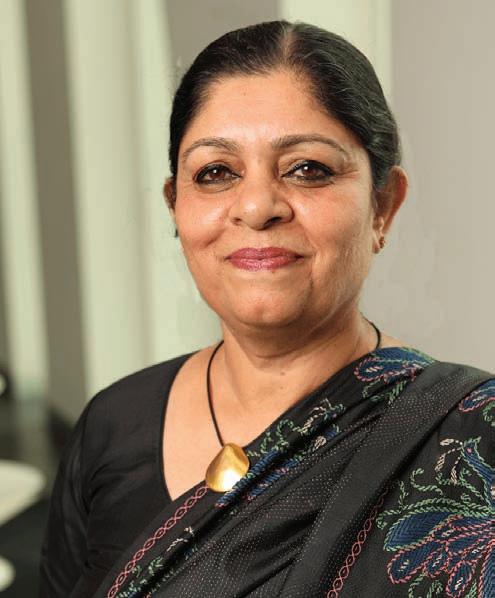
January2023 EXPRESS HEALTHCARE 23
and leadership.
Poonam Muttreja,Executive Director,Population Foundation of India highlights that even if there are voices of concern,it is important to use the opportunity offered by India’s G20 Presidency to further communicate the country’s recent success in stabilising its population by following a rights-based approach
India’s success in population and development matters needs to remain a continuing story.Even amid voices of fear,the country needs to firmly advance on its path by focusing on the disadvantaged and marginalised geographies and social groups
POLICY
FTAs to add heft to Maharashtra health tech growth story,propel India’s health-tech sector
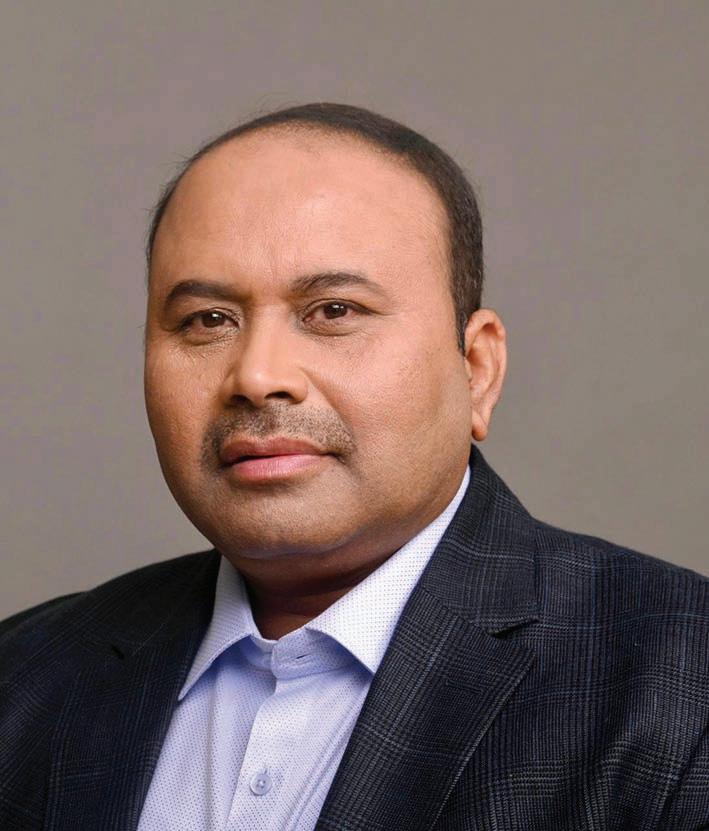
Free Trade Agreements (FTAs) have played a significantly compelling role in the development of commerce between nations by facilitating access to each other’s technology, free flow of goods and services. Apart from reducing and eliminating tariffs, they address behind-the-border barriers that otherwise impede the flow of goods and encourage investments. The health-tech ecosystem in Maharashtra has benefited immensely from them and in the post-pandemic period, it has deservedly garnered the interest and importance it pre-eminently deserves.
In the post-COVID period, India has established unequivocally that its health-tech ecosystem has leap-frogged to emerge as one of the fastest growing sectors, thanks to the conducive government policies. The country, and by a natural corollary, Maharashtra now stand as mascots of global hub of health and wellness. The FTA and the liberalised Foreign Direct Investment (FDI) regime have fuelled the sector to give it a high trajectory in sub sectors like hospitals, medical devices, health insurance etc to become economic engines. The last decade has been phenomenal in boosting this vital aspect of human welfare.
The country’s health-tech sector comprises hospital infrastructure, medical devices/equipment, health insurance, clinical trials, telemedicine and medical tourism, which in the late 90s were still in its infancy. The FTAs have provided fillip to the sector with
growing revenues resulting from rising domestic demand for a better health-tech ecosystem. While Mumbai naturally catapults itself as a hub of health-tech given its burgeoning metropolitan girth, tier-2 and tier-3 cities such as Nagpur, Pune, Aurangabad, Nashik are
all set to witness a quantum jump with parallel growth elsewhere in the country.
The 100 per cent allowance in FDI for the constructions has served as a backbone to the allied and ancillary units like pharma, diagnostics, medical equipment, medical insurance
and telemedicine. The World Trade Organization (WTO) has projected India as third globally in terms of exports and the graph is set to rise further. Driven by factors like population demographics, a growing middle class, rising incomes, better health awareness, and increasing lifestyle diseases, India’s healthcare market has been expanding at a compound annual growth rate (CAGR) of 22 per cent. The Indian health-tech market, which was valued at US$86 billion in 2016 is now projected to reach US$367 billion by 2023 and US$638 billion by 2025.
Segments in biotechnology, medical devices & equipment, diagnostics and medical tourism – in that order – have seen a reassuring growth with India inking deals with US, UK, Japan and the European Union. The presence of multinational companies in these sectors as also the MSMEs registering remarkable growth is testimony that all is well with the agreements.
A NITI Ayog 2021 industry report identifies the Indian health-tech market as a sunrise sector, valued at US$6.2 billion in 2020 and estimated to touch US$21.3 billion by 2027. This segment is slated to grow at 19.2 percent Compound Annual Growth Rate (CAGR), driven by factors like a rising elderly population, increase in the incidence of chronic diseases necessitating long-term care, enhanced demand for constant personalised care, as well as the increasing number of nuclear families in rapidly urbanising
areas.
The FTAs serve as case studies in establishing how India has prospered in the global economy and just how feasible it will be for the nation to sign more such agreements. A drawback with India as a host country in global trade has been a slowdown in domestic production but the kinks are being ironed out and it shall find a way forward in figuring out and reforming strategies on the global map.
It must also be remembered that this was the situation on the health-tech front in other countries too but the sector managed to recoup and overcome inadequacies. The pandemic has caused what is being called a structural shift for digital healthcare in many countries, including India. The current situation prescribes that it is time for India to reboot Health-Tech and support startups.
The overemphasis on FTAs has accelerated the health-tech ecosystem. For instance, the mini trade deal which is almost coming to a fruition with the United States (US) will see a reduction in custom duties levied by India on the import of medical devices from the US. The prospective pact, on which the US was seen as soft-pedalling, is now taking shape being billed as a win-win benefit for both sides and it is only, in a manner of speaking, a case of work-in-progress-inconvenience -is-regretted.
Through constant scrutiny and evaluation of the FTAs, the Indian government has been at pains to eliminate the anomalies
EXPRESS HEALTHCARE January2023 24
Anand Madia,Officer on Special Duty to the Chief Minister,Maharashtra explains how Free Trade Agreements (FTAs) can play a crucial role in propelling the India’s health-tech sector and highlights that in the post-COVID period,India has established unequivocally that its health-tech ecosystem has leap-frogged to emerge as one of the fastest growing sectors,thanks to the conducive government policies.The country,and by a natural corollary,Maharashtra now stand as mascots of global hub of health and wellness
The FTAs serve as case studies in establishing how India has prospered in the global economy and just how feasible it will be for the nation to sign more such agreements
in inverted duty structure in the health-tech sector. It has discussed these issues with countries including the Middle East. Under the FTAs, duty free import of medical devices is allowed which is a good augury for the sector that has already come out of its cocoon through R&D support.
Liberalisation of services trade will be an important and mutually beneficial component of a possible FTA between Australia and India. The main imports from India where there has been significant growth include pharmaceutical products. Australia and India consider that further liberalisation of health services would provide consumers in both countries with tangible benefits. However, Health-Tech is a sensitive sector and thus health services is one of the least-committed sectors
in the WTO. Less than 50 WTO members have undertaken commitments – with most commitments concerning hospital services.
Vibrant economic interactions between India and Japan form the core of special strategic and global partnership. As the bilateral relationship gains traction, health-tech with focus on drugs and pharmaceuticals are among the key parameters of FTA. As per the Indian Brand Equity Foundation, the Indian drug and pharmaceutical sector in India received a cumulative FDI inflow of USD 16.5 billion from April 2000- March 2020, and is expected to grow to USD 100 billion, while the medical device market is expected to grow USD 25 billion by 2025. India and Japan have inked plans to collaborate on manufacture of high-standard generic medicine
in India. By way of policy changes, India has permitted 100 per cent FDI through automatic route for greenfield pharmaceutical projects, and 74 per cent for brownfield pharma projects through automatic route and beyond that through Government of India (GoI) approval route. Further, the GoI has approved certain schemes for the pharmaceuticals sector in India, including a scheme on the promotion of Bulk Drug Parks, which aims to ensure financing for common infrastructure facilities in three Bulk Drug Parks, with proposed grants-inaid to the relevant Indian states with a maximum limit of Rs 10 billion per Bulk Drug Park. India and Japan plan to collaborate on multiple aspects of health-tech, including human resource development in the fields of acute medicine, surgery,
trauma care, etc. In this regard, India also plans to prepare training programs in India, for the healthcare workers of both countries. India and Japan are also working on collaboration between Japan’s Asia Health and Well-being Initiative and India’s healthcare initiatives such as Ayushman Bharat, by introducing affordable technology.
The COVID crisis highlighted the need for a collective response from the international community to reinforce preparedness for this and future crises. Following a first discussion among EU ministers, the European Commission shared its ideas for an international initiative to facilitate trade in healthcare products with a group of World Trade Organization (WTO) partners among whom India is one. These ideas address the ongoing
international discussion on how to facilitate access to affordable pharmaceutical and medical goods and avoid trade disruptions in times of crisis, and could form part of an international agreement open to all WTO members.
The Indian healthcare services sector is now getting worldwide attention due to its quality and its competitive advantage in various areas, with health tourism an emerging area. India is in a position to tap the top end of the US$3 trillion global healthcare market because of the quality of its services and the brand equity of Indian healthcare professionals across the globe. The Indian government places top priority on the healthcare sector and is focusing on indigenous research and development and the further creation of human capital.

January2023 EXPRESS HEALTHCARE 25
HEALTHCARE IT
Regular audits and stringent policies go long wayin preventing anycyber-attacks
Robust security architecture and infrastructure protect data flowing within and outside hospital systems. However, the recent AIIMS cyberattack underlines the gaps that still need to be filled. Your views on this?
The massive electronic health records data of patients, and the critical role they play in keeping the healthcare system afloat, make them more attractive to cybercriminals. While there is no doubt that our government is continuously making efforts to strengthen the cyberattack prevention mechanisms in the healthcare domain, Lok Sabha data still reported over three million cases of cyberattacks from 2019 till June 2022. This alarming figure makes enhanced cybersecurity the need of the hour.
In my opinion, just having a cybersecurity solution is not enough, keeping the software updated is equally important. In addition, there is a need to educate employees about how their seemingly small actions can make or break an organisation’s cybersecurity infrastructure. Plus, having regular audits and stringent policies go a long way in preventing any cyberattacks.
Can you highlight some of the most notable cyberattacks against healthcare institutions and lessons learnt from them?
The recent attack on AIIMS threw daily operations out of gear at an extremely busy
healthcare institution, causing long queues and general disarray. Not just this, personal health records of millions of people and those that hold critical positions in the country were breached.
Not to forget, the ransomware attack in the US, that delayed chemotherapy treatments and diverted ambulances. In 2021, the first ‘death by ransomware’ lawsuit was filed in the US, when a mother blamed a hacking for fatal brain damage of her newborn after heart rate monitors failed. There is another case I recall, where attackers were responsible for locking up Universal Health Services’ systems for days in September 2020, which resulted in delayed lab results and patients being diverted to other hospitals.
Like I mentioned above, often people could be the weakest link. Data security is not the responsibility of just the organisation, each and every individual plays an important role in ensuring that the security measures placed to protect the organization’s data are not overridden. Organizations at large must show diligence by offering cybersecurity training to their employees so that they can carry out their work in a secure manner.
In event of a breach, timely intervention can reduce the damage to a great extent, thus reducing the liability and potentially saving the company a large sum in regulatory fines and
any collateral damage. So, in a nutshell, through regular trainings and adopting the right security solutions that are kept up-to-date, organisation’s cybersecurity framework can be made stronger.
How do you see the future of cybersecurity in healthcare in India?
In the wake of increasing attacks, I foresee stringent compliances around cybersecurity in healthcare industry to come. With government-backed policies aimed at strengthening cybersecurity in this sector and elsewhere, India’s healthcare space is going to be more robust in the years to come.

There is a growing impetus for expanding the protection coverage to build a robust healthcare ecosystem, proactively
factoring in the cybersecurity requirements and infrastructure. The organisations within this space are also gradually acknowledging the need to build a culture where employees are proactive defenders of patient data and other crucial information.
What are the crucial steps to safeguard data security in hospitals?
Firstly, that basic cybersecurity measures like firewalls and antivirus software are quite affordable for enterprises, hence should be thoughtfully and proactively adopted. It is interesting to share, that an average data breach costs Indian organisations up to Rs 17.6 crore. So, in comparison to this, cybersecurity infrastructure costs zilch.
Secondly, having a software is not enough, keeping it up to date by applying the latest patches that are sent to the systems is of utmost importance. And, lastly, employees should be trained to be able to better spot possible security dangers and make more informed decisions while operating digitally. Cybersecurity audits should be given priority and be made a part of the regular process adherence.
As an industry stakeholder, what according to you are the major healthcare cybersecurity challenges? Health care infrastructure in our country has lot to catch up on and we have seen lot of work in this area in last few
years. However, most of the investment has been directed to the core systems and cybersecurity initiatives still have to struggle for right attention.
In some cases, the cyber security solutions exist but the importance for keeping them updated at all times is not well understood. And in few cases where you do have the cybersecurity budgets and the systems well updated, employees are not trained on best digital practices. Thus, making organisations prone to risks.
Another key challenge in my opinion, factoring to the lag in cybersecurity adoption is the lack of awareness around overall cyber safety and its importance in our country.
Can you throw some light on the promising health tech trends for 2023?
Healthcare is an evergrowing sector, and technology has certainly been a solution to some of its major challenges. The techbased inn ovations in the medical space accelerated during the pandemic and will continue to grow in the coming year as well. On the cybersecurity front, we can expect an increase in the adoption of zero-trust security, which when applied holistically to an environment, will create the framework, concepts, and architecture to address data, identity, workload, network and device security.
Kalyani.sharma@expressindia.com journokalyani@gmail.com
EXPRESS HEALTHCARE January2023 26
Dr Sanjay Katkar ,Joint Managing Director & CTO,Quick Heal Technologies in an interaction with Kalyani Sharma talks about the recent AIIMS cyberattack and highlights that in the wake of increasing attacks,I foresee stringent compliances around cybersecurity in healthcare industry to come
INTERVIEW
DIAGNOSTICS
Technological advancements in Hematology have led to facilitation of cellular analysis
Dr Anil Handoo ,Senior Director,Hospital Laboratory Services and Senior ConsultantHematology,BLK-Max Super Speciality Hospital in an interaction with Express Healthcare talks about the role of technology in Hematology
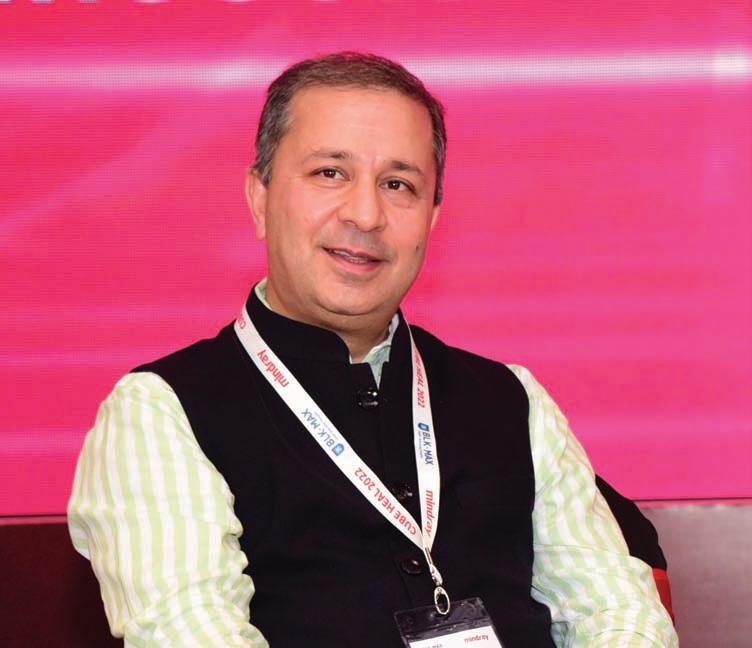
You have almost two decades of experience in the field of Hematology. According to you, what are the major factors that have changed the face of Hematology today?
Technological advancements in the cell counter/Hematology analyser science, along with automation of majority of the critical steps in analysis, have been the major changes in recent years, which have led to facilitation of cellular analysis, and improved the way we work in lab. Right from improvements in technology, with better flag optimisation, todays’ hematology analyzers are able to not only differentiate mature cells, but also have the ability to accurately pick up the presence of abnormal cells. With addition of digital morphology platform and Artificial Intelligence (AI) with Machine Learning (ML) algorithms, digitised morphology has further enhanced the ability of picking of incidental findings on the smears, which sometimes were missed by manual microscopy for the sheer lack of time and focus on every slide.
If you have to explain the concept of digital morphology to a layman, how will you do that?
Digital Morphology is nothing, but visualisation of peripheral blood smear microscopy using camera, and automating the image capture with projection on to a computer, instead of manually seeing a slide on the microscope. Digitisation and AI-based pre-classification of cells on the smear ensure less amount of time spent on every smear with enhanced workflow efficiency. There is also an
advantage of having stored digital image data not only for reviews at a later date, but also a possibility of remote viewing and opinion seeking.
How has digital morphology revolutionised the field of Hematology?
Digital morphology, with AIbased algorithms, has ensured highly reproducible cellular classification, quantification of abnormalities, not only for the white blood cells, but also for red cells and platelets.
Possibility of scanning the smear on edges for presence of platelet clumps, or any other abnormalities enhance pick up rates of such abnormalities.
Additionally, review and valued
opinion of an expert from a remote location, with real-time incorporation into the report has been made possible.
What is the role of AI in digital morphology? Can you explain with one/two examples?
AI is adding new dimensions in morphology analysis, and predictive capability of the analysers has been increased many notches up. For example, let’s say if there is an abnormal cell or parasite which is present, but in very small numbers, human eye has a chance to miss, but since digital morphology analyser is going to look into lot more cells than human microscopy,
chances of it getting picked up are higher.
Will AI replace the role of humans in pathology laboratories?
I do not see that happening in near future. However, AIassisted cell analysis helps humans in obtaining more precision and accuracy.
To what extent can we rely on the results delivered by AI?
As long as instrument is wellmaintained and smear is appropriately stained, I would trust AI to do a reasonably good job most of the times.
How can digital morphology be made affordable so that it
can reach the masses? What are your suggestions?
Increasing the awareness regarding use of digital morphology would ensure increased demand. In parallel, miniaturisation of devices with smaller footprint and reduction of production costs would help make affordable to masses.
According to you, what are the aspects in digital morphology that need to change or evolve?
High-speed scanning with upgradation of AI and constant machine learning for preclassification of cells would help improve the output. Also, remote web-based access with cloud-based data storage is the way to go to help us utilise the system better.
Can you please share your experience of using Mindray’s Hematology System in your laboratory?
Adoption of newer methodologies gets you across newer challenges; Digital Morphology Platform (DMP) integration into our routine workflow was no exception. Our initial experience has been that of learning and change management. However, once we settled, the experience has been exhilarating. We have had some very interesting and beautiful pick-ups by the DMP, and many beautiful images of cells with characteristic morphologies. While we bask in the glory of digital morphology, I still feel there are some areas of improvement and I trust Mindray Team is constantly working to improve the system.
January2023 EXPRESS HEALTHCARE 27
INTERVIEW
HEALTHCARE TREND
Andhra Pradesh Medical Services and Infrastructure Development Corporation (APMSIDC) to facilitate the supply of Erba range of fully/semi-automated biochemistry analyzers, coagulation analyzers and urine
Primary Health Centres, Urban Primary Health Centres, Community Health and Wellness Centres, Sub-District Hospitals and District Hospitals in the state of Andhra Pradesh.
The Transasia team is also imparting training tolabora-
Pradesh over a period of 45 days.
Early this week, they organised a 3-day training program in the newly-formed NTR district where several laboratory technologists were trainedon the Erba range of analyzers. Theseadvanced

tests related to malaria, dengue, jaundice, anemia, cardiac disease, blood disorders and infectious diseases, free of cost, in a bid to enhance patient care.
Dr Y Ramireddy, Medical and Health Director of Andhra Pradesh Medical and
Health Department opined that the AP government’s initiative will attain access to equitable, affordable and quality health care services that are responsive to people’s needs.
Time and again at Transasia, it is ensured that their products meet one’s needs for reliable and affordable IVD solutions.
EXPRESS HEALTHCARE January2023 28
Transasia Bio-Medicals join hands with APMSIDC to offer equitable,affordable and qualitydiagnostic services The collaboration will facilitate the supply of Erba range of fully/semi-automated biochemistry analyzers,coagulation analyzers and urine chemistry analyzers
MEDTECH
Evolving medical device regulatoryregime
‘Health Interest of India’

Sapna Soni,Head-Government | Regulatory Affairs & PR,Mindray Medical India highlights the strengthening of regulatory basics of the medical device industry.This alongside the government and industry’s pulls and pushes ,which ‘together’are slowly arriving at a sync for a harmonious standardisation of medical device regulatory regime on international standards .
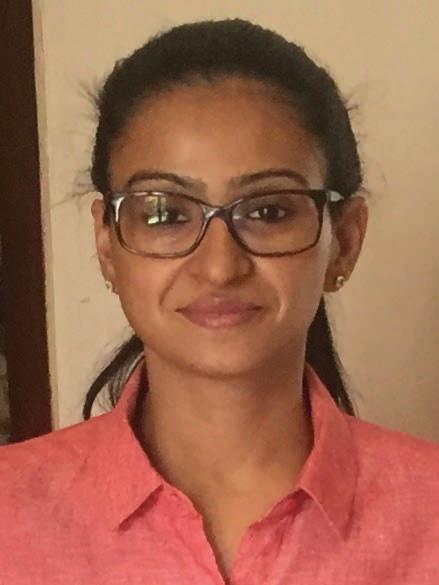
It’s great to see India evolving under the current leadership in achieving regulatory ‘global standards’ in all sectors including medical devices.
The risk classification of medical devices [Class A, B, C, D] and timeline for manufacturing/import license regime have been put in place. With the ground authorities picking up the momentum for grant and assessment of same, nevertheless maintaining the continuity of business from voluntary to mandatory transition.
The introduction of Medical Devices Rules 2017 – lot of Regulatory basics have been laid and are getting in shape. Putting manufactured medical devices not only on international footing but also regulating the imports now on international harmonious standard.
The introduction of draft Uniform Code for Medical
Device Marketing Practices (UCMDMP) is another great dynamic step in direct of health interest of India. The same brings in features to regulate fair marketing practices of the medical device industry.
With open minded conversation on many regulatory aspects for medical devices with the Department of Pharmaceutical [DoP] which under the aegis of Hon’ Minister Mr. Mansukh Mandviya and Hon’ Secretary [DoP] Ms. S. Aparna, the industry has seen fair and logical points being strengthened further and being considered for changes.
Not to miss on this the tireless and ever-continuing efforts made by the Central Regualtory Authority - Central Drugs Standards and Control Organization, under the leadership of Drug Controller General of India and the team of Ministry of Health & Family Welfare.
Also, heartening to see that in the ‘health interest of the country’ the Medical Research Centers being strengthened and auxiliary government departments also being linked to medical devices. To state some evident examples like the Ministry of Telecommunication [Wireless & Planning Coordination] for all approvals for medical devices using RFID/Bluetooth/Wifi. The upcoming regulation by Ministry of Environment, Forest & Climate Change [MoEF&CC] regarding Medical Device waste disposal for Extended Producer Responsibility.
With the regulatory basics strengthening the industry alongside the government look forward to see a lot at the State Regulator’s end. We hope to see the gaps and lapses to be covered with march of time and synchronisation of all rules at all India level.
January2023 EXPRESS HEALTHCARE 29
All this especially done under support and aegis of Department of Pharmaceutical, Hon Minister Sh.Mansukh Mandviya and Hon’Secretary Smt.S.Aparna

BUSINESS AVENUES EXPRESS HEALTHCARE January2023 EXPRESS HEALTHCARE 30 To Advertise in Business Avenues Email: rajesh.bhatkal@expressindia.com rbhatkal@gmail.com

BUSINESS AVENUES EXPRESS HEALTHCARE EXPRESS HEALTHCARE January2023 31
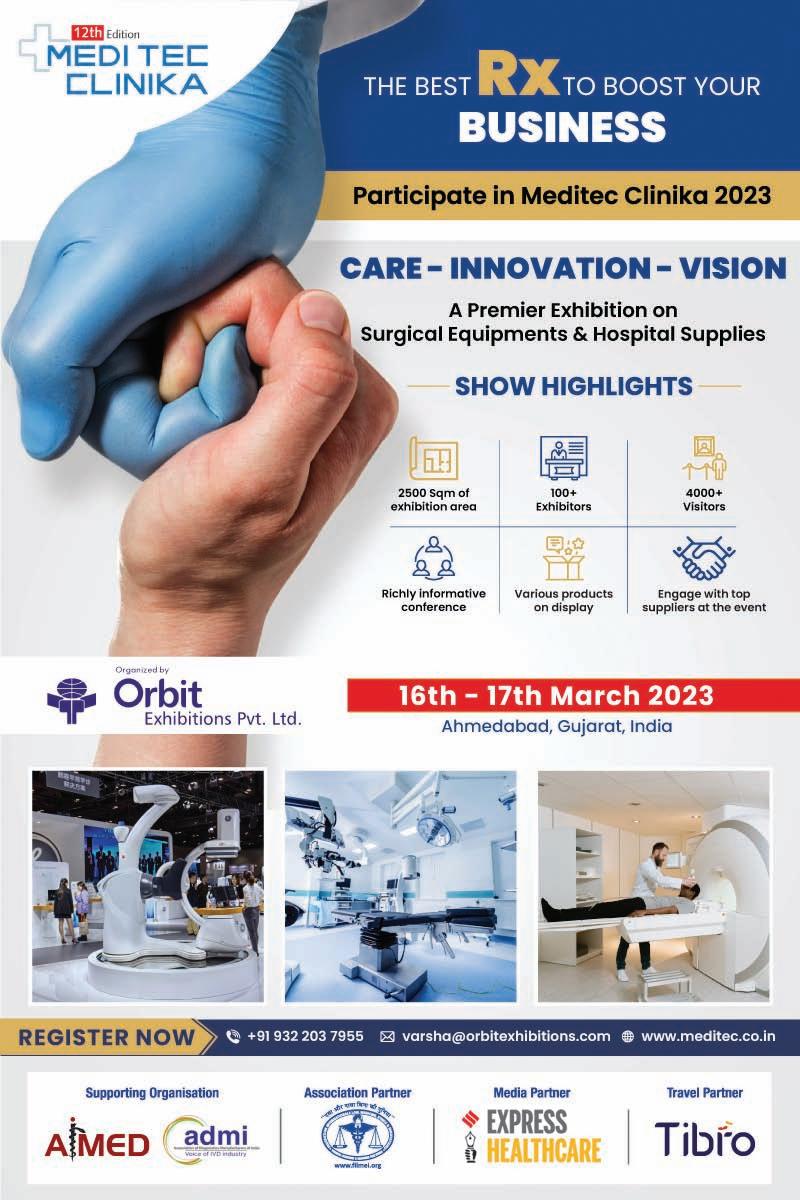
BUSINESS AVENUES EXPRESS HEALTHCARE January2023 EXPRESS HEALTHCARE 32

BUSINESS AVENUES EXPRESS HEALTHCARE EXPRESS HEALTHCARE January2023 33


BUSINESS AVENUES EXPRESS HEALTHCARE January2023 EXPRESS HEALTHCARE 34
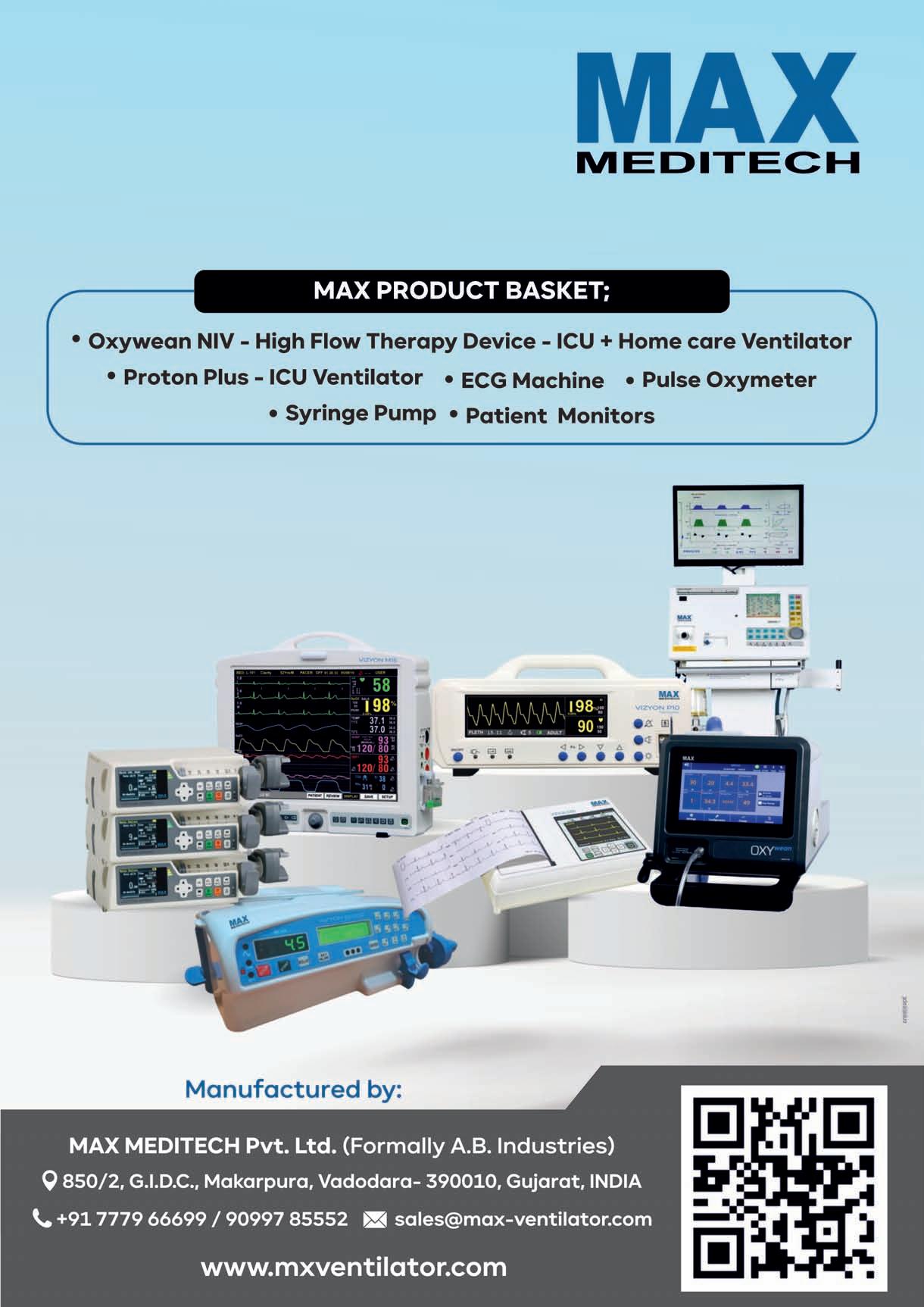
BUSINESS AVENUES EXPRESS HEALTHCARE EXPRESS HEALTHCARE January2023 35
HEALTHCARE TRACKER
Mispa Revo Plus: The time resolved immunofluorescence analyzer from Agappe
Thomas John,MD,Agappe highlights that immunofluorescence analyzers are relatively new types of medical equipment that are increasingly utilised for the diagnosis of a wide range of disorders,including cancer,infectious diseases,cardiovascular diseases,fertility,and pregnancy, to name a few
The immunofluorescence assay, also known as IFA, is an essential immunochemical technique that enables the detection and localisation of a wide variety of antigens in a variety of tissues and cell preparations. IFA is also known as the immunofluorescence assay. It offers excellent sensitivity and signal amplification compared to other processes such as immunohistochemistry, which make use of a variety of microscopy methods.
Immunofluorescence analyzers are relatively new types of medical equipment that are increasingly utilised for the diagnosis of a wide range of disorders, including cancer, infectious diseases, cardiovascular diseases, fertility, and pregnancy, to name a few. The majority of IFA analyzers have a relatively small footprint and provide reliable results in a time frame that is acceptable to the user. In recent years, there has been a substantial rise in the demand for immunofluorescence analyzers, particularly as a result of the ever-increasing popularity of point of care applications.
Mispa Revo Plus, the latest addition to Agappe’s growing portfolio in IVD, is an immunofluorescence analyzer for determining the concentration of certain analytes in serum, plasma, and whole blood. Direct and indirect immunofluorescence assays are the two primary types of analysis.
TRFIA (Time Resolved Fluorescence Immunoassay) is a type of indirect IFA that is utilised by the Mispa Revo plus. Consequently, we offer greater sensitivity as well as specificity. With the Mispa Revo Plus car-
tridge, the TRFIA technology of this equipment guarantees accurate results.
More than 20 different parameters can be tested with the Mispa Revo Plus, with a cartridge stability of 18 months and it can analyse different metabolic profiles like thyroid, cardiac, fertility, and bone metabolism. The safe calibration of the QR Code makes it possible to obtain the results in a timeframe of less than 20 minutes.
Mispa Revo Plus is an excellent match for the requirements of the POC diagnostics market following the pandemic. The early adopters of the Mispa Revo Plus have received exceptionally valuable test results on a number of criteria, which is definitely advantageous to point of care applica-
tions in OTs, ICUs, emergency units of hospitals where independent immediate results are required for faster therapeutical decisions.
When thyroid disease is suspected, the first step in the diagnostic process is to obtain a Thyroid Function Test, which includes measurements of thyroid stimulating hormone (TSH), thyroid stimulating hormone receptiveness (TSH-R), and thyroid stimulating hormone (TSH). The measurement of serum TSH concentration is considered to be the most accurate fluorescent compound is composed of rare earth ions (Eu3+ Compounds), which can produce highly specific fluorescent light and are visible for a longer duration. Serum TSH concentration
measurement is considered to be the most effective fluorescent compound. main thyroid dysfunction can be ruled out with this particular measurement.
Cardiac biomarkers are crucial for the rapid, accurate diagnosis, therapy, and prognosis of acute coronary syndrome. When the heart is injured or under stress, molecules called cardiac biomarkers are released into the blood. Physicians employ only a few cardiac biomarker tests consistently. Troponin is the preferred biomarker test for diagnosing heart damage, although NT pro BNP is typically used to diagnose heart failure.
Attempting to conceive can be thrilling but it can be challenging and disappointing for some women as time passes without success. Statistics indicate that between 10 and 14 per cent of the Indian popula-

a leading cause. There are six primary fertility biomarkers, including FSH, LH, Prolactin, Progesterone, beta HCG, and AMH.
Vitamin D deficiency is becoming a lifestyle issue, particularly among elderly folks and those who do not receive enough sunlight. A shortage in vitamin D contributes significantly to the development of metabolic bone disorders such as rickets and osteomalacia.
The current status of vitamin D has been connected to a number of other problems, including metabolic syndrome, diabetes, cardiovascular diseases, autoimmune diseases like rheumatoid arthritis, infections like tuberculosis, and even the risk of getting cancer.
As a result, Mispa Revo Plus is able to assist in the early and accurate diagnosis of a wide range of infectious illnesses, heart indications, and repro-
tion is infertile. Diverse health difficulties have paved the way for the increase in infertility among married couples; nonetheless, the altering lifestyle patterns are becoming
ductive markers. Its compact size, portability, and capacity for real-time monitoring are all characteristics that are extremely valuable to clinicians as well as patients.
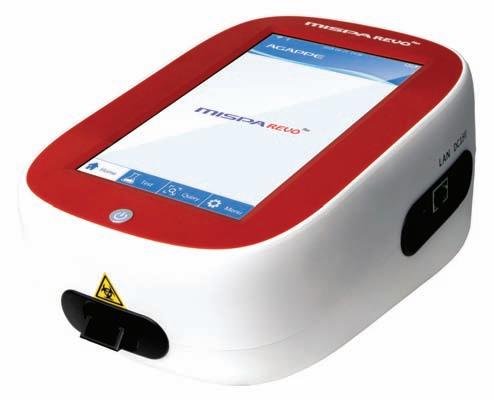
EXPRESS HEALTHCARE January2023 36
Polymed: Transforming healthcare for enhancing patient care
(Polymed)
The global healthcare growth story has reshaped and redefined the very concept of “healthcare.” India is setting new global standards in quality, delivery, and cost-efficiency with breakthrough healthcare innovations. Polymed is a paradigm of Indian healthcare’s growth story, delivering innovation at scale with unparalleled quality and cost-efficiencies. It is evident that our constant investment in innovation, operational excellence and ongoing development of our people are what enabled us to persevere in our steadfast dedication to help communities and countries throughout the world.
The future of medical devices sector looks bright as demand for indigenously manufactured devices continues to grow. Today, Polymed is the largest exporter of consumable medical devices from India for last 10 years in a row. The company’s products are present in more than 120 countries through which it has been successfully serving the global medical community.
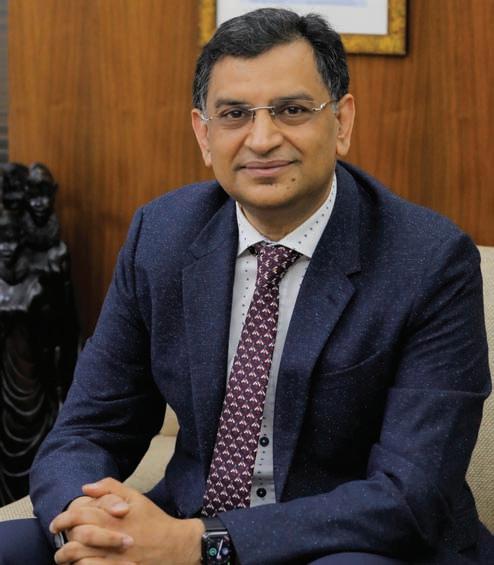
We foresee an omnipresent, proactive, and integrated system of health and well-being completely replacing the current illness-focused system in next decade. Rather than focusing on incremental augmentations to our devices, Polymed would focus on using transformative and cognitive technologies to enhance products by developing or partnering to acquire sophisticated data analytics capabilities, getting much closer to the patient, and leveraging new cognitive technologies to improve operations.
We may also have a role to
play in care enablement by collaborating with the partners that will run the just-in-time supply chain, facilitate devices and medication procurement operations, and get the product to the hospitals.
In a multi-stakeholder environment, we are empowering our commercial teams to have a broad vision of the many stake holders who will influence or make the decisions, such as clinicians and nurses, value decision committees, procurement
departments, and regional authorities.
As a responsible organisation, Polymed will drive this change by continually adopting latest and innovative technologies to serve patients better and address society’s evolving needs. At the same time, we are shedding the old ways of doing things that no longer align with our values. We’ve redefined our business model switching to clinical and patient-focused delivery. The future represents a sig-
nificant opportunity to modernise clinical research and drive positive change amidst disruption across every aspect of healthcare delivery to patients. Polymed is embracing solutions that digitise processes and improve collaboration to enable patient-centric, paperless trials.
By replacing manual and paper-based processes with digital and virtual methods, we can drive higher quality study results. With the tools, technology, people, and processes in place, we can be fully compliant while undergoing positive, transformative change.
The world’s healthcare needs are always rising and evolving, and so are our R&D investment and product portfolio.
The company is building up 4 new manufacturing plants & all of them will be operational in 2023. With this additional capacity, Polymed will increase its penetration in India, Europe & USA.
To make our patient-focused model a success, we’ve rewritten the product development strategy by bringing user-centric design early in the device development process. We identify clinical users’ priorities and factors that will help with a safe and effective adoption of the device.
At the same time, company is also expanding its customer base and product portfolio by making inroads into focused therapeutic areas. We’ve already strengthened our portfolio across crucial segments such as critical infusion therapy segments, vascular access, blood transfusion, diagnostics & renal care. We will continue to focus on executing strategic
priorities, investing in the development of new products, and expanding our existing portfolio.
Beyond product offerings, Polymed is also positioned to help hospitals and health systems make the transition to the future of health by play a significant role in reducing medical costs, optimising HCPs performance, and improving patient outcomes in the near term.
Emerging technologies in manufacturing, automation, digitisation, and big-data are presenting our customers and us with exciting new opportunities.
Polymed has always been an advocate of a net positive sustainability strategy-maximising our positive contribution while minimising our environmental footprint. Every year, we conduct a thorough assessment to make sure we address the most urgent and relevant social challenges and to uncover areas where we need to do more.
This data-driven approach helps Polymed stay environment-conscious, competitive, and future-ready. We will continue to consider sustainability issues as part of our strategic initiatives and operations.
As the largest exporter of disposable medical devices from the country, we have a responsibility to pioneer in making the world a healthier place with patient-centric medical technology.
Our vision is the guiding principle in our corporate journey, while our aspirations are milestones in that journey. Continually striving to reach these milestones makes sure that we are on the right track.
January2023 EXPRESS HEALTHCARE 37
Himanshu Baid,Managing Director,Poly Medicure
highlights that the future of medical devices sector looks bright as demand for indigenously manufactured devices continues to grow.Today,Polymed is the largest exporter of consumable medical devices from India for last 10 years in a row.The company’s products are present in more than 120 countries through which it has been successfully serving the global medical community
We foresee an omnipresent, proactive,and integrated system of health and well-being completely replacing the current illnessfocused system in next decade
HEALTHCARE TRACKER

APIdrug.com,an online sourcing platform for global API and pharma ingredients
Partha

APIdrug.com
API and Pharmaceutical ingredients value chain is part of a huge and complex Pharma ecosystem. Global API and pharma ingredients market is estimated at close to 300 billion dollars.
Pharma ingredients is a highly traded product category and a large volume of business is done in a fragmented and unorganised manner.
Lack of competitive pricing, when dealing with fresh API and pharma ingredient producers or merchants, quality is doubtful, Inconsistency and assured supply of pharma ingredients impacting formulations production schedules, lack of financing and delays in deliveries are the major problems faced by the API and pharma ingredients buyers
Suppliers, too, are dealing with supply constraints, obstacles, and problems.
APIdrug.com founded to solve critical issues confronting API and pharma ingredient buyers and dealers
APIDrug.com is a worldwide
network that connects the world's major API and pharma ingredients producers with pharma manufacturers and merchants that provide a full range of global supplychain services. The platform will bring together the whole API value chain in the pharma ecosystem, from suppliers to
buyers, to make sourcing efficient, smart, and cost effective.
The robust and secure digital platform will revolutionise the way API and pharmaceutical ingredients are traded internationally by providing a cutting-edge global tech platform capable of e-bidding, e-auction,
contract management, and demand-supply monitoring.
APIdrug.com will offer solutions to the continuous problems that customers and suppliers are experiencing.
APIdrug.com will accommodate both large and small orders.
The digital platform will give strong supply-chain assistance
solutions ◆ Catering to large bulk orders as well as customised order quantity
to ensure efficient inventory management. With complete visibility of API and pharma ingredient demand and consumption data, manufacturing will be streamlined.
It’s a disruptive platform in the API and pharma ingredients industry offering –
◆ Tech powered sourcing
Providing required information regarding quality certification and regulatory compliance ◆ Inventory and supply chain management ◆ And financing support
◆
APIDrug.com is an industry-
first, category exclusive, disruptive platform with unmatched features which has been designed to address all the critical needs and problems faced by API and pharma ingredients buyers and sellers across the world. Join us in our efforts to transform global API and pharma ingredient sourcing.
EXPRESS HEALTHCARE January2023 38
Dr
Banerjee,Head-Business Development,APIdrug.com highlights that
is founded to solve critical issues confronting API and pharma ingredient buyers and dealers
The platform will bring together the whole API value chain in the pharma ecosystem,from suppliers to buyers,to make sourcing efficient,smart,and cost effective


REGD.WITH RNI NO.MAHENG/2007/22045,POSTAL REGD.NO.MCS/162/2022 – 24,PUBLISHED ON 8TH EVERY MONTH, POSTED ON 14TH,15TH,16TH EVERY MONTH,POSTED AT MUMBAI PATRIKA CHANNEL SORTING OFFICE,MUMBAI – 400001







































 ByKalyani Sharma
ByKalyani Sharma















































